educate





Because the true measure of education is not in numbers but in the strength and abilities of a young person who has the confidence to take on whatever comes next.
At Seymour College, we believe student success should be measured by far more than just a final set of academic results. We value Complete Achievement in every girl – the sum of her academic endeavours as well as her co-curricular engagement and service to the community.

Complete Achievement
This is a more accurate record of our girls’ success, proudly celebrating each student’s individuality, interests and holistic achievements. It captures the young women of strength, optimism and justice they have become.
Scan to learn more about Complete Achievement at Seymour or book a personal tour of the College at www.seymour.sa.edu.au.
Dynamic learning spaces designed for children aged 2 – 5 which harness connections with our natural surrounds
Curriculum with emphasis on play-based learning, creativity and literacy and numeracy
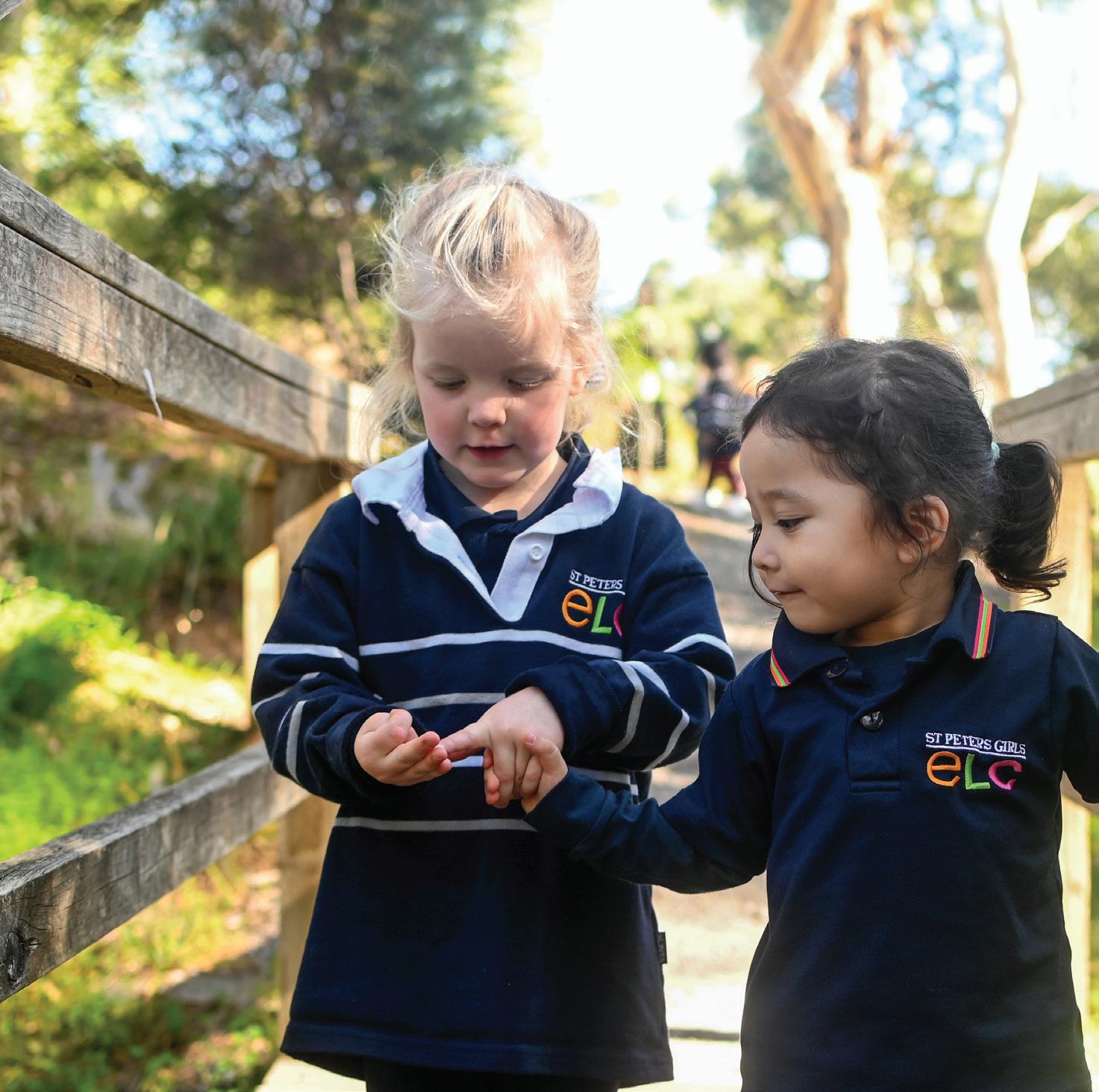
Providing a targeted ELC to School Pathway experience in the lead up to Reception commencement
ELC & School Tours
Thursday 10 August, 9am
T +61 (08) 8334 2215
E enrolments@stpetersgirls.sa.edu.au
www.spgs.school/ELC
As we approach the halfway mark of the school year, it's incredible to reflect on how time flies. Countless lessons have been taught, tests have been taken, homework has been eaten by the dog, and it's likely that a few school jumpers have mysteriously disappeared along the way. Our children are fully immersed in their year of learning, and as parents, we may find ourselves contemplating decisions for the upcoming year sooner than we anticipated.
In this issue we take a closer look at the world of scholarships and provide a comprehensive guide for parents who are seeking financial assistance to support their child's education. We share valuable tips and insights on how to navigate the application process, opening doors to educational opportunities that may have seemed out of reach. We also take a look at the diverse range of scholarship offerings from schools across the state, showcasing the possibilities available to students.
For those with musical futures on their minds, we have a guide to choosing the right instrument for your child thanks to founder of Muzikboxx, music teacher and musician Monica Rouvellas. Choosing the perfect instrument for your child can be

quite the challenge, but Monica walks us through the essential factors to consider when guiding your little maestro toward their musical destiny. And hey, if it turns out to be a recorder, who are we to argue?
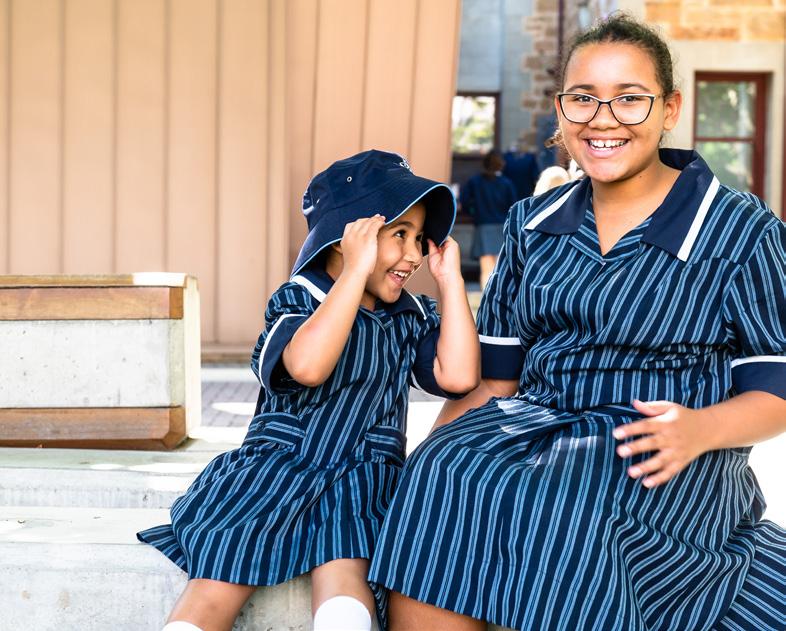
We also have the privilege of sharing Junior Landcare's invaluable insights on connecting with Country and educating children about First Nations perspectives. This article shines a light on the significance of indigenous knowledge and the profound connection to the land and emphasises the invaluable contributions of First Nations communities to landcare initiatives, bringing forth unique perspectives on environmental stewardship.
Thank you for your continued support of EDUCATE. We hope this issue inspires meaningful conversations and empowers you to make a positive impact in the lives of your young learners.
Publisher Charlotte Chambers
Editor
Olivia Williams
Content Manager
Olivia Williams
Editorial Contributors
Dr Ertimiss Eshkevari
Deb Woodard Knight
Professor Harriet Hiscock
Dr Simone Darling

Michael Hawton
Nabula Brdar
Jan Marie Macfarlane
Assoc. Prof. Lyndsey Collins-Praino

Mark Le Messurier
Junior Landcare
Ella Persse
Art Director
Bec Bendle Sales
Katie Brown
katie@kiddomag.com.au
Printing Distribution

Passing Out
For more education and family content head to kiddomag.com.au @kiddomag
Within a Wilderness girl lies an unshakeable self-belief. Anywhere she wants to go, anyone she wants to be—she can, and she will. Because at every opportunity she is encouraged to celebrate her adventurous spirit in the empowering environment of Wilderness School—a world leader in girls’ education.
In her early years, a spirit of joy underpins all teaching and learning. It is here that she explores her interests by actively engaging in her education in an environment where her dispositions, experience and knowledge are enriched and respected.

Continuing through the junior, middle and senior years, dedicated and progressive educators guide her learning journey, seeing her for who she truly is and working collaboratively with global experts to wrap evidence-based academic frameworks around her unique strengths. With their support, her potential is boundless.
As she grows, so too does her understanding of the world and the respectful relationships that bind it together.
Nurtured by non-denominational Christian family values, she matures into a compassionate friend to her day and boarding peers, an esteemed member of her community and a responsible world citizen—just as generations have before her and generations will after.
She will experience obstacles.
Pioneers always do. But she is resilient, a trait learned from those who have raised her, taught her and studied alongside her.
Courageously she enters the unknown, confident she will create the life she wants to lead—both personally and professionally. This is the lifelong imprint left by Wilderness School and the underpinning of her extraordinary future.
At Wilderness, she will.
DISCOVER MORE ABOUT EACH GIRL’S JOURNEY FROM ELC TO YEAR 12 TODAY
wilderness.com.au
A place for girls and boys to explore, investigate and discover through play.
A well-rounded education that caters specifically to the needs of boys: academically, socially, emotionally, physically and spiritually.

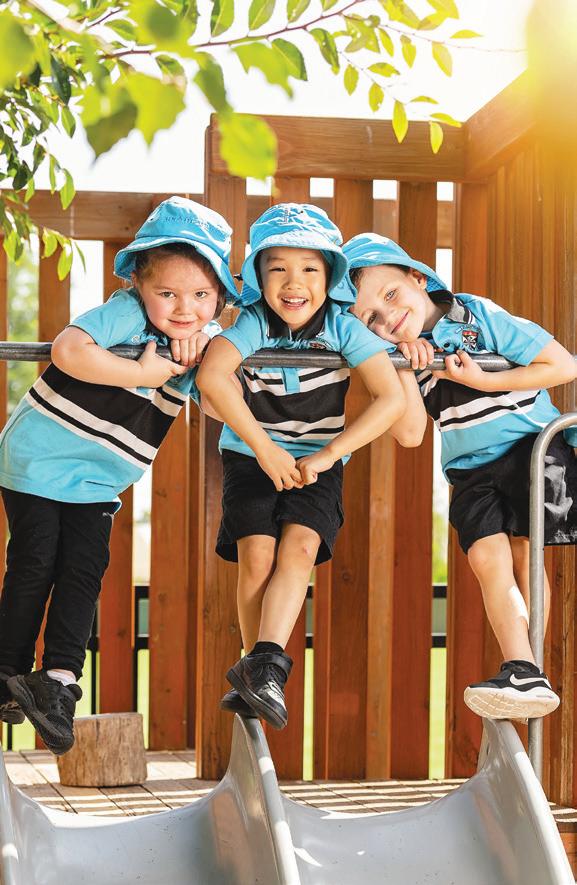

University Senior College is an independent school for Years 10, 11 and 12, located on the campus of The University of Adelaide. USC is different. Not only are USC students enabled to achieve their best academic results, they are well prepared for university and life beyond school.

USC students learn to take responsibility for their education and discover how to work independently and with others. They benefit from a strong culture of learning and are inspired by passionate teachers who offer ongoing support and mentoring via one-on-one sessions. USC’s unique partnership with The University of Adelaide enables USC students to meet and learn from staff at The University, and to utilise their state-of-the art facilities. This takes learning to the next level.
USC provides a structure that prepares students for university. The USC timetable allows students to complete most of their independent study during the school day, and they have time for


out-of-school interests or work commitments also. The adult learning environment starts with simple things, like no school uniform and addressing staff by their first name. These behaviours assist young people to develop independence, confidence, and maturity within a diverse learning environment.
USC students are encouraged to develop and maintain a good study schedule to reach their personal best and maintain a balanced, healthy lifestyle. All USC students are assigned a mentor teacher who helps them plan their study schedule, manage their workload, and support their wellbeing.
USC provides a flexible and exciting opportunity for students who require acceleration and challenge in a rigorous learning environment. Most importantly, USC fosters an environment in which everyone wants to learn. If you are commencing Year 10, 11 or 12 in 2024, take a closer look at USC.
BOOK A TOUR
The best way to see yourself at USC is to register for a guided tour. Weekday guided tours or virtual tours and Q&A sessions provide the opportunity to experience firsthand the learning culture at USC.
usc.adelaide.edu.au/tours
Enrol now for 2024.
The University of Adelaide

North Terrace, Adelaide SA 5005
usc.adelaide.edu.au

Every parent has been through it. One moment, your little darling is happily chattering away. The next, you’ve made the unforgivable error of grabbing the blue cup instead of the red one. Cue epic meltdown. But why does this happen? Why do children struggle to regulate their emotions?
From birth, children express emotion. Through their facial expressions, infants convey what they are experiencing internally, which plays an important role in having their needs met. However, being able to recognise and regulate these emotions is a skill that doesn’t develop until much later and must be actively learned.
In fact, while children begin learning to selfregulate their emotions in the toddler years, it is not until the age of 8 or 9, or even beyond, that they become proficient at this. There can also be significant variability between children.
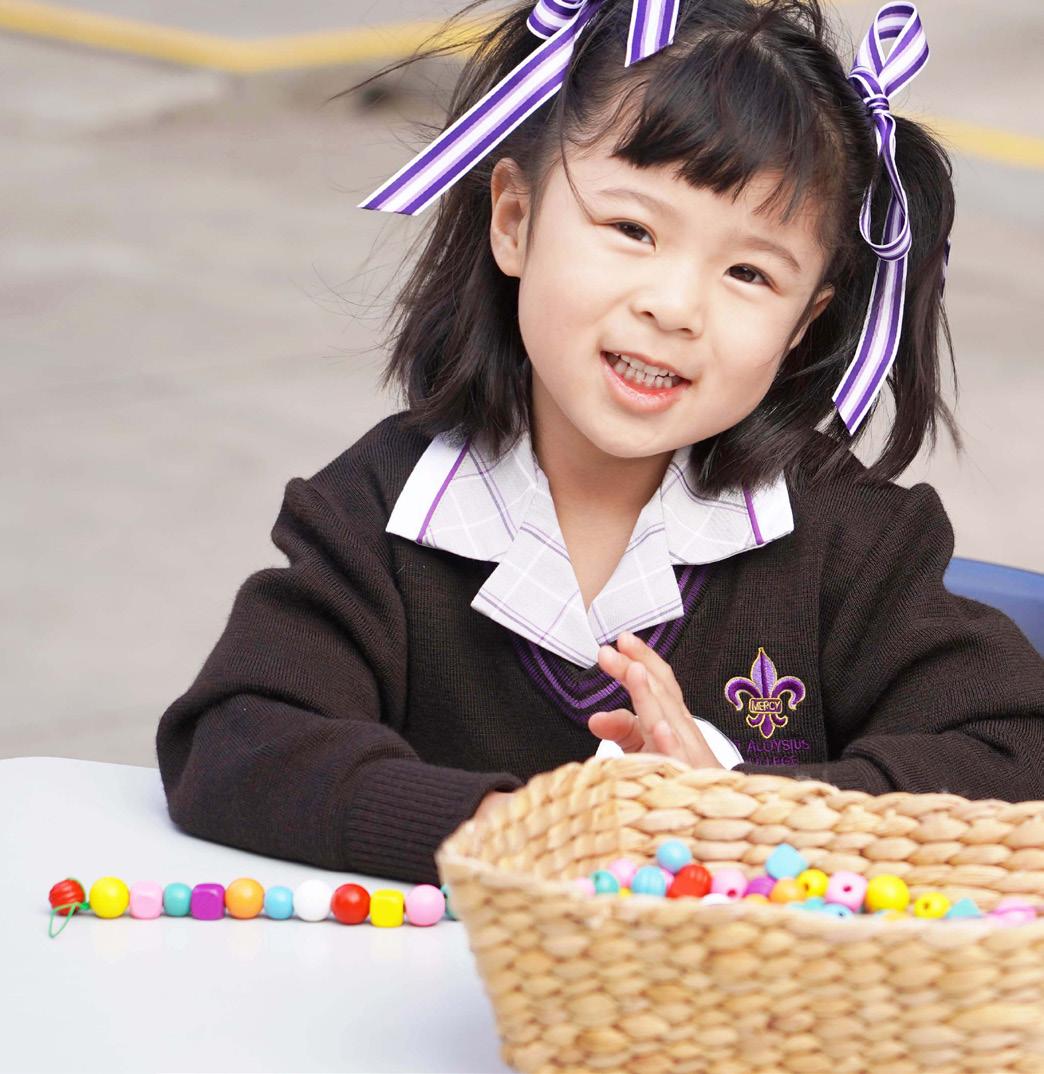
positive relationships with their peers and can better cope with difficult situations.
Differences in the maturation rate of specific brain structures may also play a role. Structures deep in the brain important for emotional responses, such as the amygdala, which processes emotions like fear or anger, mature earlier than areas of the brain important for cognitive control, like the prefrontal cortex. This leads to an imbalance in activity between these regions. This imbalance peaks in adolescence, which may help explain the mood swings and high levels of emotion
seen during these years. As the prefrontal cortex continues to mature throughout adolescence (and even into early adulthood), so too does the ability to regulate emotion.
Importantly, children who can more effectively regulate their emotions do better in school, have more positive relationships with their peers and can better cope with difficult situations. So, how can you help your child acquire this critical skill?
Actively teach your child to recognise and name their emotions. For example, you can talk about how a character in a favourite book may be feeling. Encourage your child to reflect on and communicate how they are feeling. Model good behaviour, such as demonstrating how to take a deep breath and remain calm, even when your own emotions are running high (e.g. mid-meltdown).
Reflect and validate your child’s emotions. This includes naming how they are feeling, “I can see that you are upset that we weren’t able to spend longer at the playground,” as well as reinforcing that it is OK to feel this way, “I get upset when I have to stop doing something that I am enjoying too.” Assure your child that it is OK to feel such emotions, and that no emotion lasts forever.
Develop and practice coping strategies to manage big emotions when they happen. Specific self-soothing approaches vary by child, but may include deep breathing, redirecting your child to another activity (e.g. colouring, music) or counting to calm down.
Overall, remember, while your child may have big feelings, they also have a growing brain. Someday, even meltdowns over the blue cup will pass.
Children who can more effectively regulate their emotions do better in school, have more
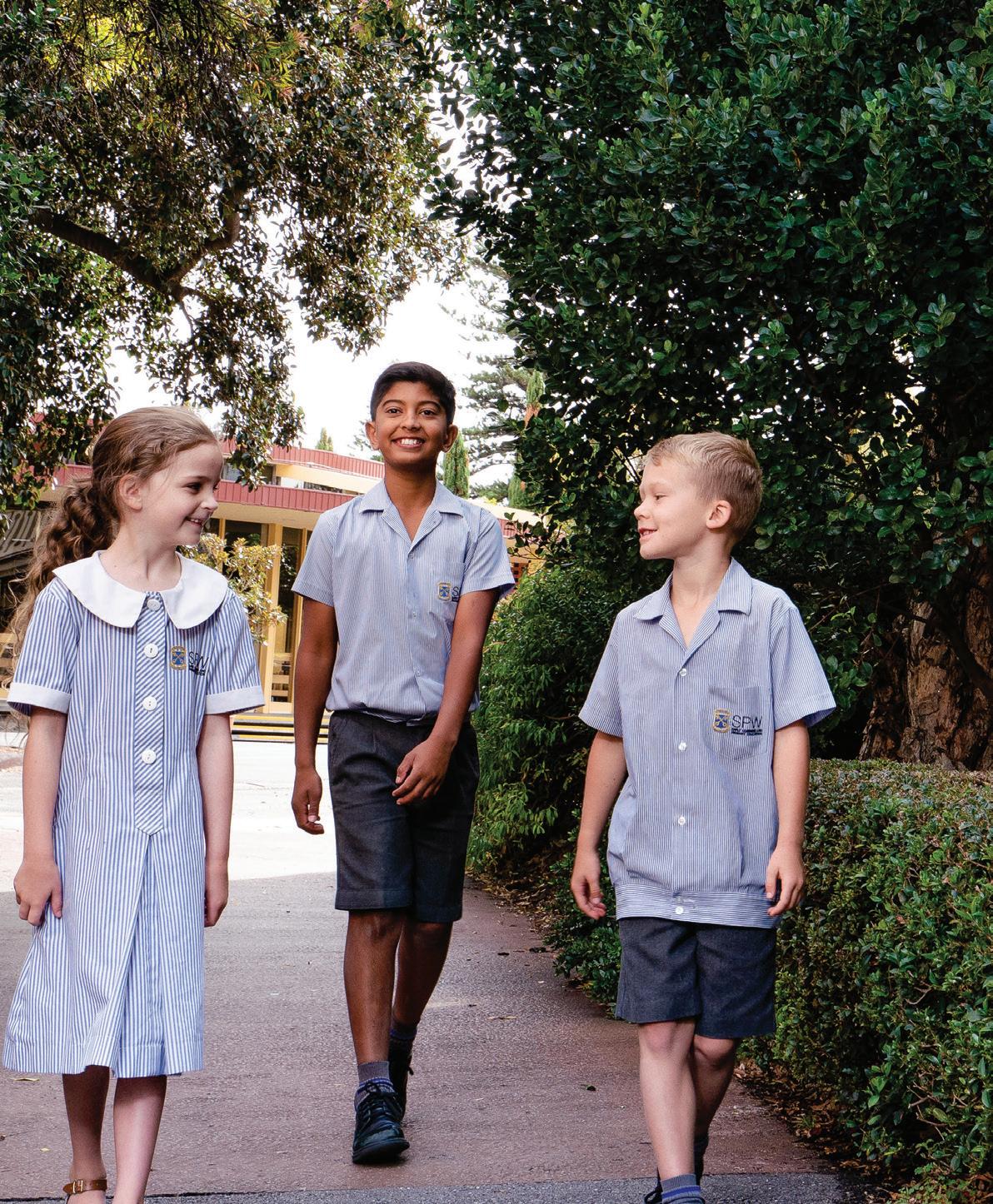



impact a child’s life and in particular their ability to learn.
Mental health literacy helps children and their carers to understand how they’re feeling, what to do about it and how to support their own/others mental health and wellbeing, which may end up helping to prevent problems down the track. Without literacy, mental health issues can often be missed or wrongly diagnosed.
To address these challenges with mental health literacy in the school environment, Murdoch Children’s world-class researchers have been involved, along with ANZ’s leading EdTech provider, Education Perfect and content and technology studio Matterworks, in developing a ground-breaking new program for both students and teachers at the primary and secondary school level, called Decode Mental Health and Wellbeing. Decode is specifically designed to address prevention through delivering engaging mental health literacy content in a whole of classroom approach.
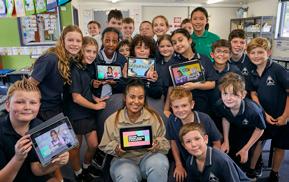
 By Professor
By Professor
One in seven 4-17 years old experience mental health issues* and a further 20% of 11-17 years old experience very high levels of psychological distress. Given the impact that mental health challenges can have across all areas of a child’s life, which has been further exacerbated by stressors associated with COVID-19, child and adolescent mental health has been flagged as one of the major impact areas for significant focus and investment. The Australian Government agrees, recently announcing a $200M investment in the Student Wellbeing Boost, designed to support mental health and wellbeing in school children.
Parents and teachers are often the first to see changes in behaviour and social-emotional functioning in children. If these changes are not addressed, they can manifest as mental health issues which can significantly impact a child’s life and in particular their ability to learn. With half of all children experiencing mental health problems

before the age of 14, early intervention is critical. Murdoch Children’s Research Institute, a global leader in child health, has conducted research that shows children with mental health conditions like anxiety can be up to six months behind their peers in learning. Parents and teachers are ideally placed to identify these children who require additional support, however many feel they do not have the required mental health knowledge or skills (also known as “mental health literacy”) to appropriately support their children and students.
Teachers don’t typically receive any formal training in children’s mental health. Often they don’t have the confidence and what they’re doing in the classroom is gleaned from their own personal experience, conversations with other teachers, or from other resources such as the internet, which often isn’t evidence-based.

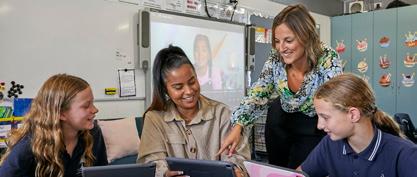
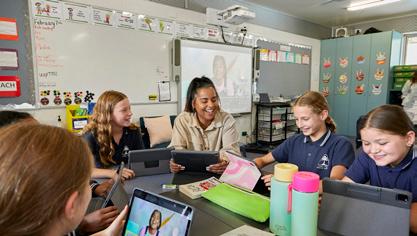
It is critical for teachers to understand mental health and to have the language to talk about it. If teachers have good mental health literacy, they can confidently talk to their students about their issues, helping them to understand how they can look after their own mental health.
The cycle of burnout with teachers is exacerbated by having to manage mental health issues in the classroom. By providing opportunities to increase mental health literacy, teachers will have the toolkit to be able to manage these issues, which can lead to better job satisfaction, and learning school engagement for the students. This in turn improves teachers’ mental health and wellbeing in the classroom setting.
A whole of classroom approach is important in tackling mental health because these issues can affect all children - and stigma remains an issue. While it is becoming easier for educators to address food allergies or asthma in children, educators can baulk at talking about mental health issues with children. Preventing mental health issues goes hand in hand with destigmatising the topic, which creates the opportunity for children to ask for help. Without that acceptance and understanding on the topic, children often suffer in silence which results in detrimental consequences to their mental health, how they function in both school and life, as well as the mental health of their family members.
Parents and teachers are often the first to see changes in behaviour and social-emotional functioning in children. If these changes are not addressed, they can manifest as mental health issues which can significantly
With half of all children experiencing mental health problems before the age of 14, early intervention is critical.
Preventing mental health issues goes hand in hand with destigmatising the topic, which creates the opportunity for children to ask for help.
Research shows children with mental health conditions like anxiety can be up to six months behind their peers in learning.Harriet Hiscock and Dr Simone Darling, Murdoch Children’s Research Institute Photos by Chris Ott Jasmine TXO and Middle Park Primary School students at the Decode Mental Health and Wellbeing launch Jasmine TXO as part of the Decode Mental Health and Wellbeing program
Decode is destigmatising mental health issues for children in a fun, engaging and accessible format. It’s interactive, evidence-based, and connects them to the topic, giving them the chance to say, ‘How do I help myself? How do I help my other friends and other classmates as well?’
Murdoch Children’s Research Institute strives to make meaningful change in communities everywhere and give all children the opportunity to live healthier and more fulfilled lives. Decode is just one of the many innovative ways Murdoch Children’s is helping ensure children get the mental health care and support they need - and as early as possible - to set them up for a happy and healthy future. Murdoch Children’s plans to continue their involvement and collaboration on Decode, currently designed for Years 5-8 with plans for more.
The National Children’s Mental Health and Wellbeing Strategy
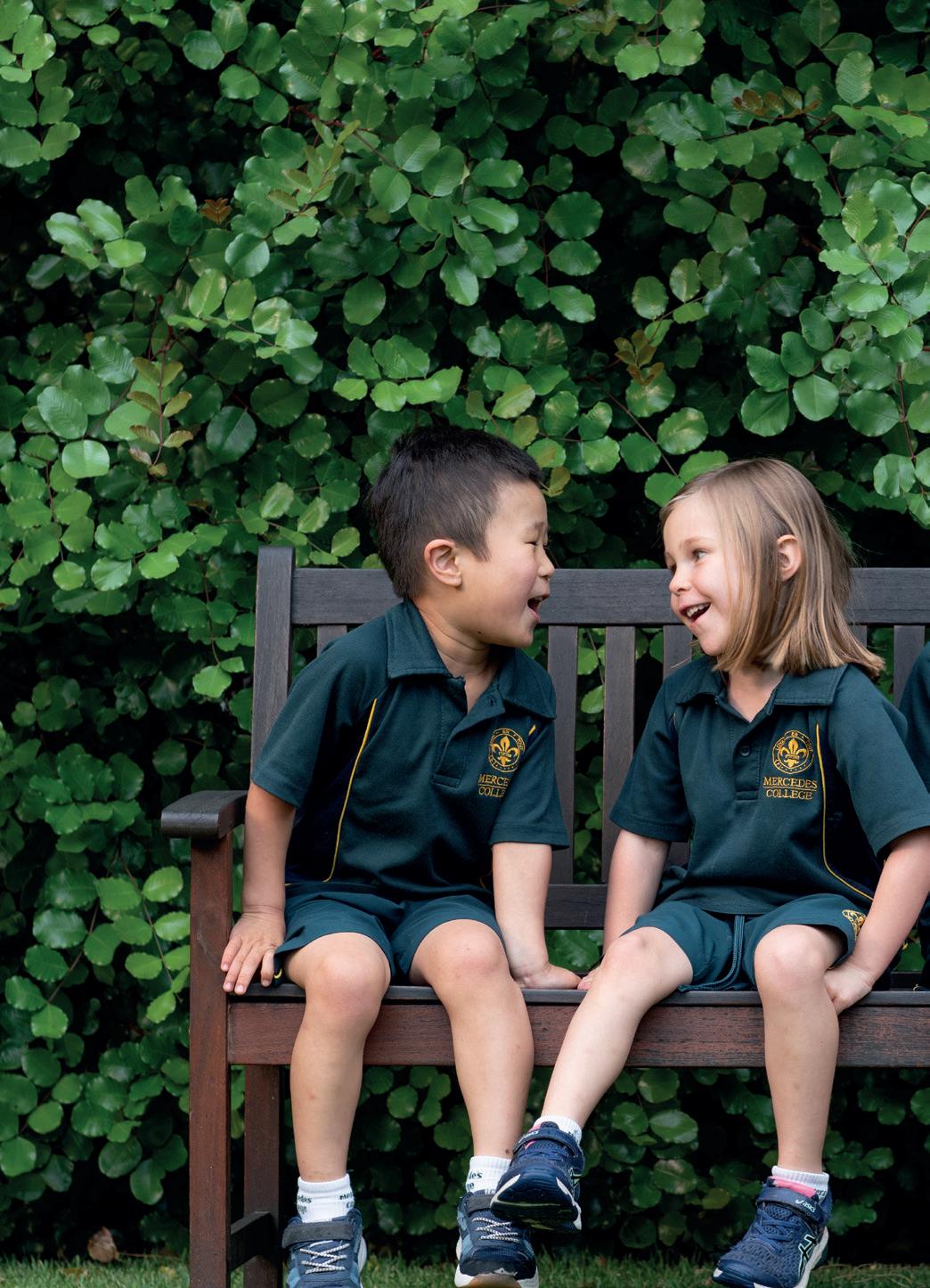
Decode is a preventative program that responds to critical community health needs. The focus on prevention to empower young people and their communities is key to improving positive lifelong mental health and wellbeing outcomes.
Decode for students features videos hosted by content creator and TikTok sensation, Jasmine TXO, with dynamic lessons that explore over 60+ topics to build literacy and understanding, the student program is a must-have for every classroom.
Each lesson contains energetic explanations, honest interviews, and fun-filled games related to mental health and wellbeing with some of Australia’s most inspiring and engaging content creators, sports people, and change-makers.
Professor Harriet Hiscock is Group Leader Health Services and Professorial Research Fellow, Murdoch Children’s Research Institute and Chief Health Officer, Matterworks.
Dr Simone Darling is a Senior Research Fellow and Program Manager, Murdoch Children’s Research Institute and Research Director, Matterworks.
For more information on Decode, available in primary and secondary schools nationally through Education Perfect: matterworks.com.au/decode
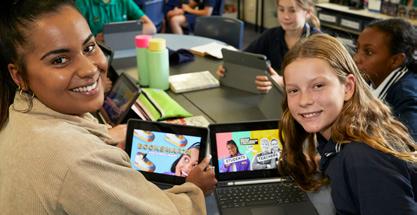
Sources: *Beyond Blue
Decode for Teachers features a 6-part podcast series and professional development program specifically designed for Teachers and Educators. Each episode, Walkley Award winning journalist and presenter Mon Schafter is joined by Professor Harriet Hiscock from the Murdoch Children’s Research Institute.
Together they tackle the burning issues relating to mental health in child and adolescent students, work through classroom based mental health hypotheticals and hear from some of Australia’s most inspiring and diverse young minds to gain invaluable insight into how to foster positive mental health in students.
While it is becoming easier for educators to address food allergies or asthma in children, educators can baulk at talking about mental health issues with children.



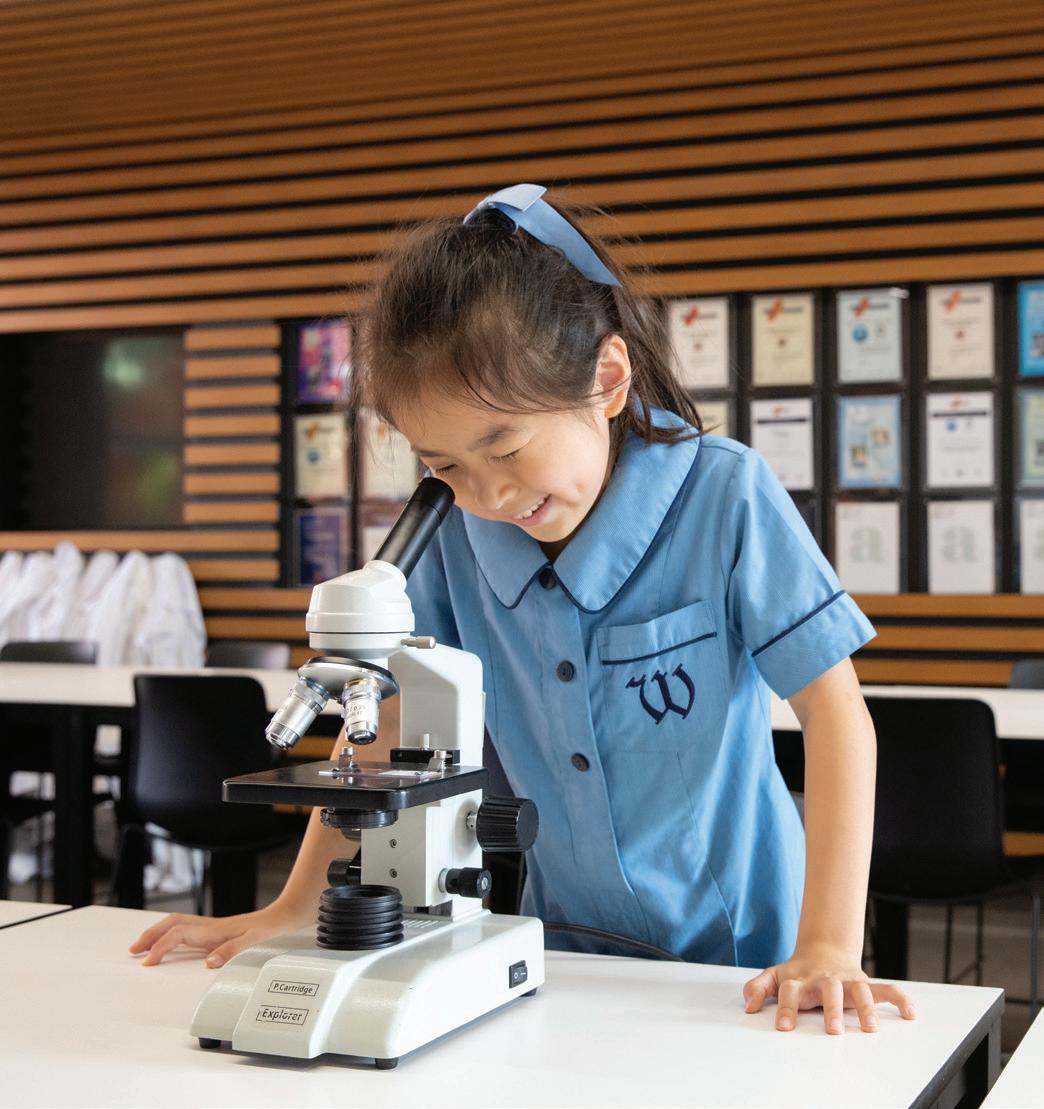 By Deb Woodard-Knight, Mathematics Teacher
By Deb Woodard-Knight, Mathematics Teacher

Teaching styles vary. I find my best lessons occur when I listen to the room and watch faces, listen to the conversations, try not to interrupt by offering my views too early, and then discuss with everyone what they have to offer. Of course, there is the important curriculum to cover as well. Students need the tools so they can question and develop their thinking. There must be a balance in the classroom of delivery of new information, building on previous concepts, practicing skills involving new ideas and using those ideas to investigate open ended problems. When I work with primary students, I rely on the fact that students have the background for us to work together and develop their questioning and reasoning further.
An example of a style of lesson that I run with groups of students in years 3 – 6 is called MathsCraft. This is a type of problem solving that is designed specifically to enhance student enquiry and to also display to them there are many ways to investigate what they and others observe. This is, after all, how mathematicians work in their workplaces. There is no answer to check in the back of a book, there is no ticking or crossing of work.
This is very open ended. If students have not seen this type of problem before they are a little hesitant to voice or write down their thoughts. This is a very important time as the teacher for you to be quiet and let the students come up with their ideas. It may take some time, but being patient and waiting is so important. If you think you have waited long enough, wait longer. Someone will say something soon. It is frustrating to wait but it is worth it. Some things I have heard students say: “The three digits are 1, 2 and 3”, someone may then say, “They are in order down from 3”. Their responses depend on the tools they
have to draw on. As a teacher you may have a direction in mind for this problem, but if your idea does not eventuate from their thoughts, go with theirs and investigate with the students. There are many patterns students come across in this investigation. So, what is happening here? The teacher has to keep quiet a lot of the time and try not to prompt the students. Students are experiencing that their thoughts are valued, that it is safe to say what they think, and working on a problem can take a long time! Resilience is an outcome. They learn how to organise their thoughts, for instance listing outcomes, producing their own tables, and importantly recording their thoughts.
Through this process students start to use the language of mathematics, they become confident to discuss their ideas and are not locked in to finding an answer. There are many answers depending on the direction the problem takes. As seen in this example there is language used that may be unfamiliar to students but that is part of the development of their ‘tools’ to use. They start to use the language themselves.
I have found this style of letting students think out loud and discuss what they are thinking has enhanced my teaching in secondary school. Rather than instructing, I try to approach work with questioning. This approach can be used in delivery of new work as well. They use their tools and realise they know a lot. As mentioned earlier there is a need for delivery to build students’ tools. Time spent on reasoning and discussing is so important too.
walford.com.au
Monica Rouvellas is the founder of Muzikboxx, an all-in-one platform for music teachers and music students, made by music teachers. Muzikboxx is a music education platform that is designed to help music teachers and students connect and collaborate more effectively.
Does your child enjoy high, medium, or low sounds? You can find out by getting your child to listen to music that features different instruments. For example, play them a violin concerto like Vivaldi’s Four Seasons or a Brahms oboe concerto to see what sounds they like the most. Choose iconic pieces of music that showcase the range and style of the instrument. For cello this might be Elgar’s Cello Concerto in E Minor, for trumpet it could be Cantaloupe Island by Herbie Hancock. Would your child like an instrument to accompany their singing? This preference will influence the type of instrument your child might choose. Keep in mind that certain categories of instruments lend themselves to particular styles of music. In seeking the perfect instrument for your child, you have the perfect opportunity to explore different genres of music and expand your horizons together.

Choosing an instrument can be one of the most difficult decisions a budding musician will face. As a (hopefully) lifelong pursuit, parents and children will have to factor in cost, noise levels, physical ability to handle and play the instrument, and of course, personal preference when choosing an instrument.
Some instruments aren’t suitable for children before a certain age like the flute which is ideally started at age 7-8. Some instruments may take up a lot of space and are difficult to transport like the harp. All instruments require a baseline of interest and concentration for children to learn and stick with as their interest waxes and wanes.
The key consideration is ensuring that there’s a “love match” between child and instrument to keep them hooked for life and keep them learning even as competing priorities get in the way. Parents should never force their own preferences or personal agenda on their child. It’s always best to let your child discover for themselves what instrument they want to play.
We know that playing an instrument has many benefits for children. Studies show that it helps improve focus, enhances academic and social skills, and is a great source of relaxation and selfexpression. Research highlights the link between music and language fluency and the way in which it positively affects brain function. But to reap the benefits of music, children first must be paired with the right instrument.
State orchestras such as the Sydney Symphony Orchestras and even youth orchestras do toddler proms where young children can listen to different instruments and even try them out. Music shops are another great option and often have knowledgeable staff who would be willing to show young musicians their options. It’s best to try out as many instruments as possible. You may find your child will go back to one particular instrument over and over again. This is a sign the instrument might be a good fit for them.
The physicality of the instrument is a major factor that limits what instruments young musicians can play. Though some instruments do require the student to be older to play them, instruments like the piano, violin and cello can be taught from as young as three due to the availability of smaller size instruments for those particular ages. The other advantage of these three instruments is that they establish an excellent theoretical foundation in music should your child be moved to learn more instruments later on.
On this note, bigger instruments require more space including when transporting and playing the instrument. Some kids don't like to carry big
instruments around at school. When it comes to practice space, do you have room to fit a piano in your home and will neighbours - particularly if you live in apartments or units and play louder instruments - complain about the noise? Then there’s the issue of performance opportunities. Students are often more motivated when they have the chance to perform whether as a soloist or with others in an ensemble. Practicing for a performance should be factored in the time commitment required when choosing an instrument.
Finally, the cost of a good instrument is another consideration since instruments don’t come cheap. For most instruments the sound is directly related to the price you pay - for example the most inexpensive violins will cost between $200-$500 but an upgrade will jump up to the $600-$1000 price range. A second hand bargain might be the most budget friendly option but parents should arm themselves with information to avoid buying a dud. muzikboxx.com
Music Teacher and MusicianThe key consideration is ensuring that there’s a 'love match' between child and instrument to keep them hooked for life.
What is normal?
By Dr. Ertimiss Eshkevari, Clinical Psychologist, PhD (Clinical Psychology), Credentialed Eating Disorder
How often have you heard someone say something like this? Our society’s obsession with appearances and dieting has become very ‘normal’, especially with the public health focus on reducing obesity and other preventable chronic health conditions. Unfortunately, however, this can be quite a dangerous obsession. It can result in a range of consequences in physical and mental health. The rates of eating disorders in Australia are concerning and current estimates are around 1 in 20 Australians have an eating disorder. Alarmingly, around 1 in 3 Australian adolescents are engaging in disordered eating, meaning behaviours and symptoms that are similar to an eating disorder that don’t quite meet the strict criteria to receive a diagnosis. Understandably, many parents have expressed they feel talking about food, eating, weight, body shape and appearance is an absolute minefield they just don’t know how to navigate in order to support their loved one to be healthy, confident and avoid the dangers of disordered eating and eating disorders. Indeed, you may have your own worries and past experiences around your appearance that make it difficult to know how to provide the right information or support to your child.
Every person has a body image, a mental picture of their body with thoughts and feelings about this. This might range from positive and satisfied, neutral, to dissatisfied and filled with hatred. The status quo in our society is for women especially, to feel unhappy with their appearance, such that body dissatisfaction has been considered to be a “normative discontent”. However, the issue of body image dissatisfaction is not just an issue for females, nor does it start only when puberty hits. Studies have shown that from around the age of 6, children may start to experience body dissatisfaction, with girls desiring slimness and boys muscularity.
Why is this so important?
Young people in Australia have been letting us know that body image is important to them, ranking it among their top concerns according to Mission Australia’s Annual Youth Survey results over the past years. Research, including from Flinders University, has shown that social media use is linked with greater body dissatisfaction as well as disordered eating. The visual nature of social media means young people may be spending a lot of time viewing idealised images of bodies that promote an unrealistic image that often cannot be achieved in real life.
The problem with young people feeling unhappy with their body is that they may focus on attempting to change their body using unhealthy behaviours such as strict dieting, driven exercise to lose weight, or such things as diet pills/ supplements or laxatives. Repeating these behaviours over time can lead to developing an eating disorder. The other danger in developing an eating disorder is in young people judging themselves and basing their self-worth on their appearance.
Eating disorders are not a lifestyle choice out of vanity, nor are they simply a diet that has gone “too far”. An eating disorder is a serious mental illness characterised by extreme concerns about weight, shape, eating and/or body image. These concerns lead to disordered and unhealthy patterns of behaviour, including restricting food intake, fasting, counting calories, bingeing, vomiting, misuse of laxative use, and excessive or driven exercise. These behaviours can lead to serious problems with physical, psychological and social functioning. A “watch, wait and see” approach can be very dangerous as eating disorders are not a phase that will just pass with time. Young people with an eating disorder need appropriate evidence-based treatment in order to recover. It is always best to seek professional help so a comprehensive physical and psychological assessment can be carried out and an appropriate treatment plan developed.
What should parents and teachers watch out for?
It is important to watch out for changes in mood or behaviours that might indicate there is a problem. For example, changes in food
choices, avoiding eating socially, sneaking foods, referring to foods as good/bad, dieting, skipping meals, unusual eating behaviours, constantly going to the bathroom immediately after eating, exercise patterns, talking negatively about their weight or appearance, preoccupation with food or appearance, changes in weight in a short period of time, isolating, withdrawing, anxious or depressed mood. These changes are especially important when you notice that it stops them from doing things. Especially things they used to enjoy or avoiding eating foods they used to like.
What can parents and schools do to help support young people and make positive changes?
The family environment sets the foundations for the development of thoughts and beliefs around food, eating, evaluating one’s own and other’s bodies, along with all the behaviours related to these things. It is important not to misunderstand this as blaming families for causing problems, rather knowing how much of an important role you can have and to feel empowered. Challenge the unhelpful messages in society, the media and other places that promote toxic diet culture. Refer to the tips section in this article for how you can be a positive and healthy role-model. Help young people to develop social media “literacy”, gaining the knowledge and skills to critically analyse, evaluate, participate online and to avoid the toxic aspects of social media.
The people around a child also have influence on them and they play an important role. Support them to avoid “fat talk”, focusing on appearance (positive or negative), teasing and bullying. There should be a “no tolerance” policy when it comes to teasing or negative comments about appearance.
“Should we be naughty and eat another slice of cake?”
An eating disorder is a serious mental illness characterised by extreme concerns about weight, shape, eating and/or body image.
Many parents have expressed they feel talking about food, eating, weight, body shape and appearance is an absolute minefield they just don’t know how to navigate.
Studies have shown that from around the age of 6, children may start to experience body dissatisfaction, with girls desiring slimness and boys muscularity.
Clinician.
Talk about food for what it is, something that nourishes bodies and something you can enjoy.
Avoid role-modelling strict dieting in order to lose weight and focusing on your weight in front of your children and teenagers. This might mean learning to manage your own relationship with food and your appearance.
Don’t “forbid” any foods completely from your child’s intake because you think it will impact their weight.
Don’t use food as a reward, punishment, or bribe.
Encourage eating and exercise behaviours for health benefits and mental wellbeing, instead of weight or shape reasons.
Focus on health and the functions of the body, namely what bodies allow you to do, rather than how they look.
Avoid any encouragement, rewarding or praising of weight loss.
Unless there is a medical reason, a child should never be on a diet or lose weight.
Use non-judgemental language when talking about food or bodies so that you don’t encourage the development of unhealthy beliefs or behaviour. For example, don’t talk about “good” or “bad” when it comes to foods or bodies, as this gives them a moral value and can lead to shame and guilt if something is considered “bad”.
For further tips, download the information sheet Helpful language and behaviour to support body confident children and communities: flinders.edu.au/people/tracey.wade

Your GP, Paediatrician, Psychiatrist or Psychologist. Preferably a Credentialed Eating Disorder Clinician.
The Statewide Eating Disorder Service (SEDS). This SA Health service is the only public eating disorder service in South Australia. SEDS provides comprehensive assessments and evidence-based treatment planning for people developing or living with an eating disorder. They also provide support and education to professionals, family and carers.
The Butterfly Foundation butterfly.org.au is Australia’s national charity supporting those impacted by body image issues and eating disorders. The Butterfly National Helpline (1800 33 4673) provides free and confidential support. They offer a range of free resources and support. This includes: the Butterfly Body Bright Families programme for parents of children and Body Kind Families programme for parents of teens. As well as the Butterfly Body Bright programme for primary schools and Body Kind Schools programme for secondary schools.
To contact Dr. Eshkevari: psychologist@thrivefamilypractice.com.au

Dr. Ertimiss Eshkevari is a Senior Clinical Psychologist at the Statewide Eating Disorder Service. She also consults privately at Thrive Family Practice, where she provides individual psychological treatment for eating disorders as well as other common mental health problems. She provides educational information sessions, workshops and is a Psychology BoardApproved Supervisor.

We may have more than 750 students in Years 7-12, but each child in our community is an individual. That’s because we have children from a rich diversity of cultures, backgrounds, and religions, each with unique abilities. We seek to educate the whole child academically, spiritually, physically, socially and emotionally to enable them to thrive for decades to come.
Enrolments are limited so get in touch today www.endeavour.sa.edu.au
There should be a 'no tolerance' policy when it comes to teasing or negative comments about appearance.
Tips to being a healthy role model and supporting a positive relationship with food and body image

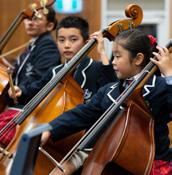
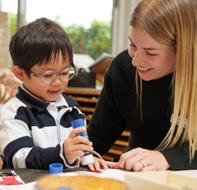

St Andrew’s School is a beacon of outstanding co-education, providing exceptional early years and primary education from ELC through to Year 6. The School’s mission is to create a nurturing environment that values and protects the curiosity, passion, and joyful innocence of childhood. With a dedicated staff committed to delivering the best experiences, care, and educational opportunities, St Andrew’s School is where young minds truly thrive.
Developing lifelong learners

As an esteemed International Baccalaureate (IB) World School, St Andrew’s takes pride in focusing on the holistic development of every child. St Andrew’s students are encouraged to become inquirers and lifelong learners, not just within the classroom, but also in the wider world. By doing so, they are equipped with the skills and mindset necessary to become global citizens and leaders of tomorrow.
St Andrew’s understands that learning environments play a crucial role in shaping the educational journey of its students. That's why they have designed state-of-the-art facilities tailored to meet the needs of a new generation of learners.
St Andrew’s classrooms foster a culture of innovation, entrepreneurship, and collaboration, empowering students to develop vital life skills such as critical thinking, problem-solving, and effective communication. By nurturing these skills, students are well-prepared for the challenges of the future.

Beyond strong academic programs, St Andrew’s offers an extensive range of extra-curricular activities, allowing students to explore their passions and talents. From Music and STEM, to Visual Arts and Languages, comprehensive offerings provide a well-rounded educational experience. These activities encourage students to embrace their interests, develop new skills, and build lasting friendships, creating a vibrant and inclusive school community.
Tailored education and wellbeing offerings
St Andrew’s believes in tailoring the educational experience to each student's unique strengths and learning styles, creating an environment where academic opportunities are enhanced, and students are empowered to thrive. This commitment to personalised education ensures that every student receives the support and encouragement they need to excel, both academically and personally.
A track record of excellence
In 2022, St Andrew’s School achieved outstanding results in the NAPLAN assessments, surpassing the state average for both Year 3 and Year 5. This achievement showcases the commitment of St Andrew’s staff and the exceptional education our students receive.

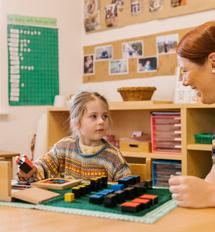
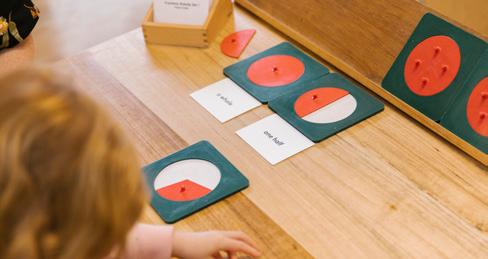
This year, The Hills Montessori School celebrates 45 years of fostering the curiosity of children in their educational programs. Located in a bush setting with two campuses - the primary campus in Aldgate and middle school campus in Stirling.
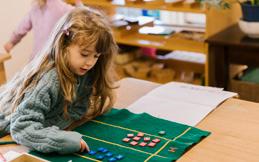
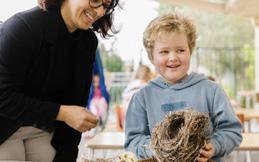
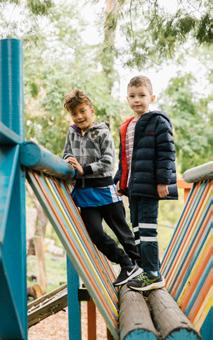
Principal Cathy France said: “The Hills Montessori school offers exceptional education across all levels of learning. The school’s commitment to outstanding teaching practices and quality pedagogy, combines with an education based on the Montessori philosophy of respect for self, others and the environment.”

The Hills Montessori Preschool is a unique program designed for families looking for a school that will give their child a quality start to their learning, in a nurturing environment. The curriculum has an emphasis on early literacy and numeracy skills, as well as experiences in geography, history, biology, art and physical education. The Preschool’s ‘practical life curriculum’ helps children develop concentration and independence in activities such as food preparation, cleaning and looking after the natural world.
When students reach the age of 4.5 years, they are invited to join the Extended Day program. This is an extension of the Preschool program and is focused on promoting collaboration between teachers, families and students to facilitate a smooth transition from Preschool to Primary School. The Hills Montessori School offers Reception intakes each term, so transition activities between the Preschool and Cycle 1 Primary (Reception/ Year 1) happen regularly.
Open Days are an excellent way to get to know students, parents, meet teachers and heads of school as well as experience the community’s sense of collaboration and cooperation. Private principal tours are also available.
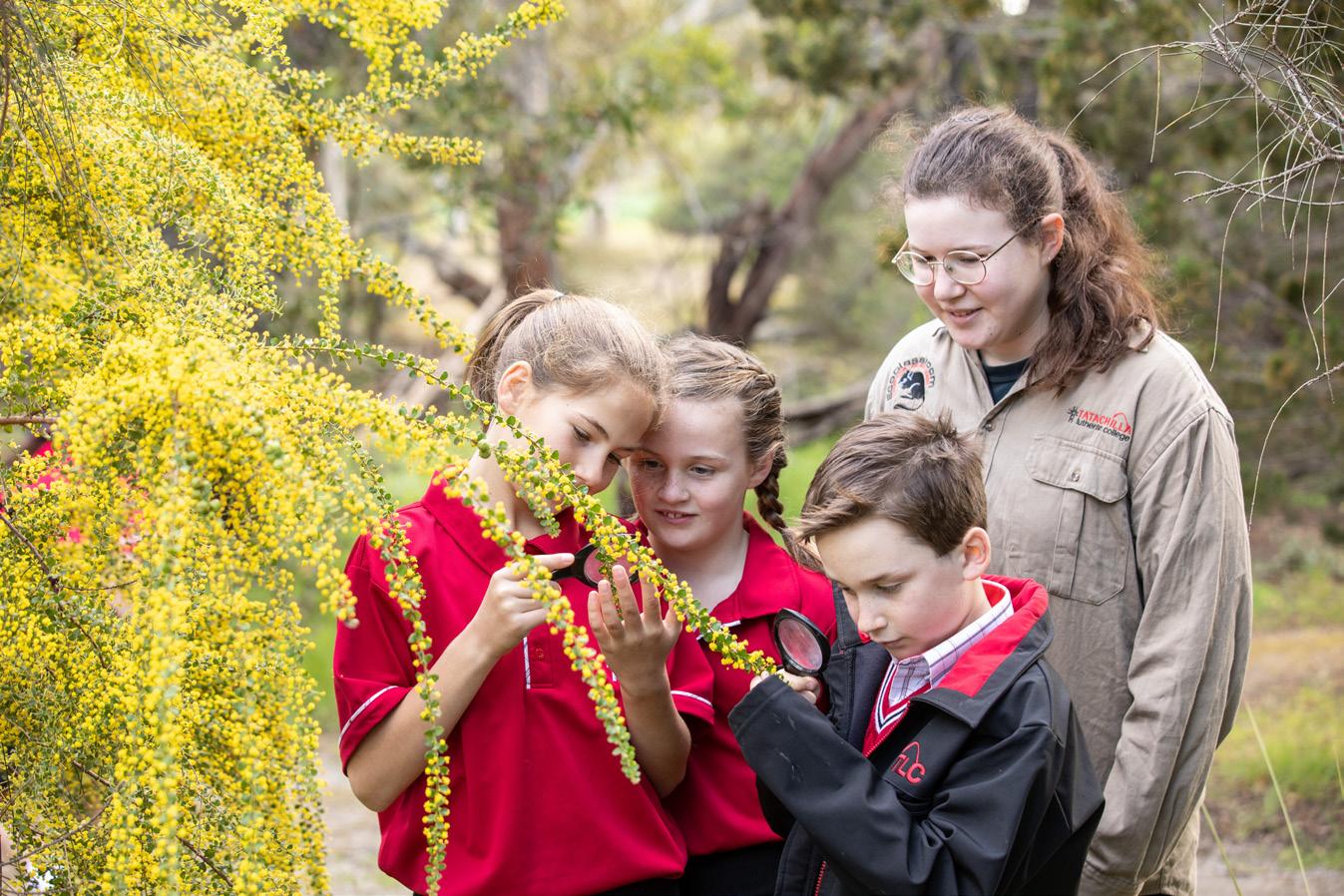
Explore our programs:

Early Learning Infant Program caters for 0-3 years
Preschool Program caters for students aged 3-5 years
Extended Day Program for children aged 4.5 years as they prepare for Primary School
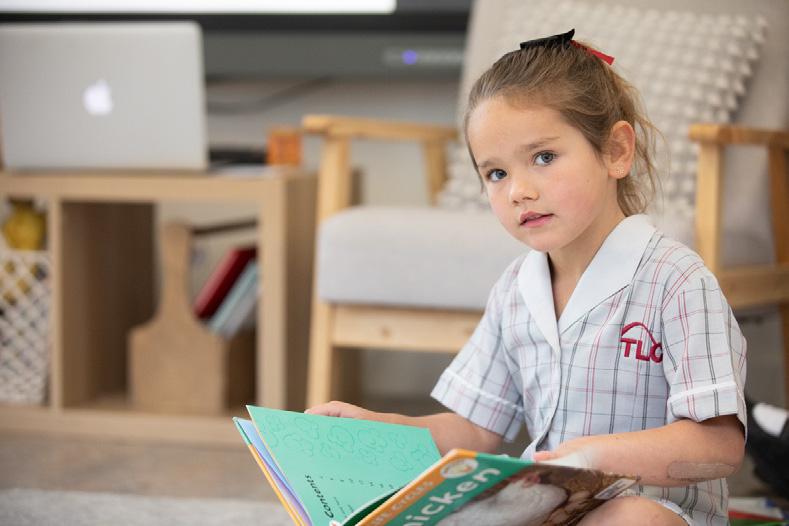
Primary Program for Reception to Year 6. Our Reception classes have continual student enrolment at the beginning of each term throughout the year
Before and After School care is available for all students in the Preschool and Primary school aged 3 to 12 years along with Vacation Care every holiday period
Bookings: montessori.sa.edu.au
Education for us is more than classrooms and grades. We move the heart, so we can move the mind.
Discover how SA schools are empowering students with scholarships, providing access to quality education, and fostering academic excellence.
International Baccalaureate Scholarship
Mercedes College fosters independent thought, supports creative thinking and encourages academic excellence, to prepare students to be leaders, for life.
Each year Wilderness School offers several Middle and Senior scholarships to girls who have demonstrated outstanding academic ability, a commitment to pursuing further academic success, who embody the School Values and in turn make a significant contribution to the life of the School.
A Wilderness Tuition Scholarship will provide your daughter with every opportunity to achieve her personal best and to become an independent and responsible young woman, able to take her place confidently in the world beyond school.
Scholarships are available for Academic, Music and Boarding as well as for girls who financially would not otherwise have the opportunity to attend the School. This includes our 2025 Year 9 Community Entrance Scholarship, which is awarded to a deserving girl with an excellent academic record who would receive the greatest benefit from this opportunity.
Applications for both partial and full scholarships commencing in 2025 open in September 2023. Discover more at wilderness.com.au/scholarships
Wilderness School
30 Hawkers Road, Medindie wilderness.com.au
St Mary's College has been educating and empowering young women for over 150 years. We value student excellence and diversity and seek to recognise this by providing several scholarships each year for students who would not otherwise be able to attend the College.

A St Mary's Scholarship student will willingly contribute to life at the College by demonstrating outstanding personal values, leadership potential, engagement in learning and a commitment to welcome inclusivity and social justice.
Scholarships available:
As a leading coeducational International Baccalaureate world school, we proudly offer the IB Diploma Programme.
If you love a challenge, and have a thirst for knowledge, join us at Mercedes College.
Through our IB Diploma Scholarship, students entering their final years of secondary school, and not currently enrolled, can complete this internationally recognised course at Mercedes College.

Applications open later this year.
Mercedes College. Where students flourish.
Mercedes College
540 Fullarton Road, Springfield mercedes.catholic.edu.au/enrolment/ scholarships
Prince Alfred College has a proud tradition of offering scholarships to boys who would benefit from, and contribute to, our academic and co-curricular programs, and to the wider College community. We value the diversity of cultures, backgrounds and perspectives that our scholarship program brings, which enriches the learning experience for all students.

Through the generosity of our College community, we are able to offer a broad range of scholarships, including Academic Scholarships, Music Scholarships, General Excellence Scholarships and Boarding Scholarships.
Our second round of 2024 Scholarships will open on Monday 22 May and close on Friday 14 July. We will be accepting applications for General Excellence Scholarships and Boarding Scholarships. These will be awarded to students who demonstrate outstanding academic achievements, exemplary work ethic and character, and all-round ability and enthusiasm across a broad range of disciplines.
For further information, please contact Rachel Marchetto, Director of Admissions, on 8334 1275 or rmarchetto@pac.edu.au
Prince Alfred College
23 Dequetteville Tce, Kent Town pac.edu.au
Principal's Scholarship Year 7 – Selection criteria include academic achievement, personal qualities, and involvement in cocurricular activities.
Reconciliation Scholarship - Awarded to eligible Indigenous Australian students at any year level.
Catholic Parish Primary School Scholarship Year 7 - Two entrance scholarships are awarded annually to students entering from a Catholic Parish Primary School.
Catholic Schools Scholarship Program (CESA) – for children and young people in care.
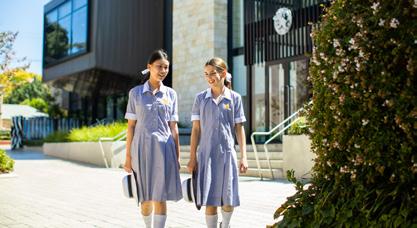
For enquiries about Scholarships or Enrolments, please contact our Registrar at (08) 8216 5704 or enrolments@stmarys.sa.edu.au
St Mary’s College
253 Franklin Street, Adelaide stmarys.sa.edu.au
Loreto College invites students to apply for our annual Scholarship Program. The School offers a range of opportunities for students who wish to attend the College and excel. As we prepare for our 2025 intake, we are offering the All-Rounder Scholarship for Years 5 and 7 students, as well as the prestigious Gonzaga Barry Scholarship, which is a full bursary scholarship available to any new student seeking enrolment into the College.
To find all the necessary details and stay informed about these scholarships, please visit our website where you will find upto-date information on eligibility criteria, application processes, and deadlines.
At Loreto College, we are committed to providing exceptional educational opportunities for students who demonstrate outstanding potential and a passion for learning. Our scholarships aim to recognise and support students who embody Loreto's values and are eager to contribute positively to our vibrant community.


Don't miss the chance to apply for these remarkable scholarships and join us on an enriching educational journey at Loreto.
Loreto College
316 Portrush Road, Marryatville loreto.sa.edu.au
Blackfriars Priory School offers a diverse range of scholarships each year to support students in their educational journey. These scholarships recognise students' personal qualities and achievements across various fields, aligning with the School's commitment to providing a well-rounded education.
One notable scholarship is the AX Academy Scholarship, which offers a 50% reduction in tuition fees for students enrolled in the Secondary School, providing an enriching learning experience through problemsolving and project-based activities in STEM disciplines. Additionally, there are scholarships available for music, general excellence, organ studies, and the preservation of cultural heritage.
Blackfriars Priory School, known for its holistic approach to education, encourages prospective families to explore the scholarship opportunities and the benefits of enrolling their sons at the school.
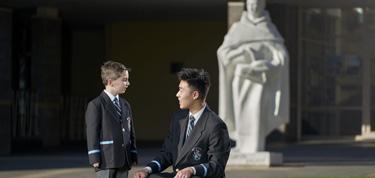
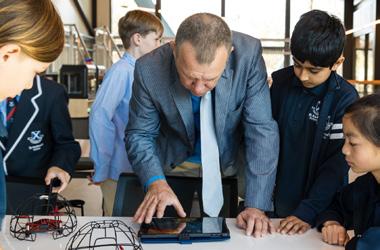
Applications for scholarships will open later in the year, and more information can be found on the website or by contacting the School directly.
Blackfriars Priory School
17 Prospect Rd, Prospect blackfriars.sa.edu.au
University Senior College invites prospective and current students to apply for a range of Scholarships that are available to pursue study in Years 10, 11 and 12 in 2024. The College seeks aspirational young women and men with a diversity of interests, abilities, backgrounds, and a natural curiosity of the world, to contribute to the depth of the community.
A scholarship is a tuition fee remission awarded to a student based on either academic achievement and/or show aptitude in a broad range of areas or excellence in a specific field.
Each year, University Senior College offers places to students who demonstrate ability and who embody the College’s values of integrity, respect, and diversity exhibiting a desire to be community minded while striving for personal excellence.
The University of Adelaide, North Terrace usc.adelaide.edu.au/enrolment/ scholarships
St Andrew’s School is pleased to offer scholarships for students with exceptional ability and potential in a range of areas, including academics, music, and STEM. These scholarships offer a unique opportunity for primary aged children to receive a highquality education that may not have been possible otherwise.
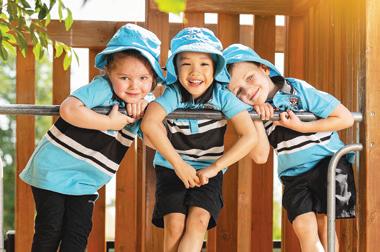
At St Andrew’s School, we provide a comprehensive primary education that focuses on academic excellence and the holistic development of every child. Our experienced teachers are committed to cultivating each student's unique strengths and talents, while our curriculum is aimed at igniting a lifelong passion for learning. Students will have access to an array of resources including, state-of-the-art facilities, a diverse student body, and a supportive community of parents and teachers.
To learn more about our Scholarships, including the ACER, Music, Bright Futures, or the Stewart Family STEM Scholarship, please visit standrews.sa.edu.au/ scholarships. Alternatively, please contact our Enrolments Office on 8168 5511 for further information.

St Andrew’s School
22 Smith Street, Walkerville standrews.sa.edu.au
SPELD SA offers a Numeracy Intervention Program for students struggling to build foundational number sense. The program is suitable for children of primary school age, and targets mathematical concepts taught from Pre-foundation to Year 3, in regular 1:1 intervention sessions.
Our highly experienced teachers use the Bond Blocks system, which is a mathematics program informed by research using evidence-based methodology, developed by Australian teacher Narelle Rice together with maths guru Dr Paul Swan.



Numeracy refers to the knowledge and skills that students develop to effectively engage with mathematics in their everyday life. These skills enable them to understand abstract concepts such as reading time, fractions, converting decimals and percentages, which transfer into all areas of personal and working life.
We recommend this program because it follows a teaching method that is proven to be effective when teaching students with learning difficulties. It is multi-sensory, it is cumulative; teaching basic concepts first, then building on these, and it provides the explicit instruction and follow up practice necessary for students to confidently develop their skills.
Kerry, Director, Teaching and Learning, SPELD SA For students in Years 1-6
Individualised support through regular 1:1 sessions
Delivered by experienced and passionate teachers
Using an Australian, evidenced-based program specifically designed for maths intervention
Students will benefit from attending the Clinic if they:
Are behind in their development of initial counting or addition and subtraction.
Struggle to identify the number of things in a set, simply by quickly looking at them. These students would rather count one by one and persist with finger counting, to add and subtract in Years 1-3.
Lack fluency when recalling number sums. E.g. 2 add 3 is 5.

Lack understanding of the inverse relationship of addition and subtraction.
Display a reluctance to participate in numeracy-based activities with low confidence or anxiety.
Have been diagnosed with a learning difficulty such as dyscalculia or other learning difficulty which may impact learning mathematical concepts.

Applications are open now for the clinic, beginning in Term 3.
Join us for a free information session to learn more about the Numeracy Clinic, including a demonstration of the Bond Blocks program.
Wednesday 19 July, 9:30am
At SPELD SA
Places are limited so please register via our website: speldsa.org.au/numeracy-clinic
SPELD SA is a not-for-profit organisation with a team of specialist educators, speech pathologists and psychologists who have been supporting children with learning difficulties for over 50 years. We offer educational and psychological assessments, tutoring, and many free resources on our website.
To find out more about SPELD SA services, including our Literacy and Numeracy Clinic, call 8431 1655 or visit speldsa.org.au
If your child experiences difficulties with foundational maths skills, we can provide the support with teachers who have been specially trained to deliver the Bond Blocks program.
As a parent, supporting your child's pursuit of a scholarship can be a significant endeavour. Scholarships can provide opportunities for your child's education and personal growth, but the application process can be competitive and challenging.
Begin by researching and identifying scholarships that are suitable for your child's interests, skills, and goals. Look for scholarships that align with their academic achievements, extracurricular activities, community involvement, and career aspirations. Create a list of scholarships that your child is eligible for and keep track of their deadlines and requirements.
2.
Prepare early: It's crucial to start the scholarship application process early. Many scholarships have early deadlines, and preparing ahead of time will give your child ample time to gather all the necessary documents, write essays, and complete any other requirements. It's also important to ensure that your child maintains a strong academic record and participates in extracurricular activities to boost their chances of success.
Organise documents: Scholarships often require a variety of documents, such as transcripts, recommendation letters, standardised test scores, and financial information. Help your child organise and gather these documents well in advance to avoid any last-minute stress. Keep copies of all the documents in a safe place for future reference.
Support essay writing: Essays are a critical component of many scholarship applications. Encourage your child to express their thoughts and ideas clearly and concisely in their essays. Provide feedback and suggestions to help them improve their writing. Remind them to highlight their achievements, aspirations, and how the scholarship would benefit them. It's essential to ensure that the essays are original and reflect your child's unique voice.
Seek letters of recommendation: Many scholarships require letters of recommendation. Encourage your child to ask teachers, counselors, coaches, or other mentors for letters of recommendation. These letters should highlight your child's strengths, achievements, and potential. Make sure your child gives their recommenders enough time to write the letters and provide them with any necessary information, such as deadlines and submission requirements.
Pay attention to details: Scholarships often have specific requirements and guidelines that must be followed. Help your child carefully read and understand the instructions for each scholarship they are applying for. Pay attention to details such as word limits, formatting, and submission methods. Double-check all the application materials to ensure they are complete and accurate before submitting them.
Emphasise leadership and community involvement: Many scholarships value leadership skills and community involvement. Encourage your child to actively participate in extracurricular activities, volunteer in their community, and take on leadership roles in school or community organisations. Highlight these experiences in their application to demonstrate their commitment to making a positive impact.
Prepare for interviews: Some scholarships may require interviews as part of the selection process. Help your child prepare for interviews by conducting mock interviews, practicing responses to common interview questions, and encouraging them to
showcase their skills, achievements, and goals. Remind them to dress professionally, be confident, and express themselves clearly during the interview.
Apply for multiple scholarships: Scholarships can be competitive, and applying for multiple scholarships can provide more opportunities. However, it's important to strike a balance and not overwhelm your child with too many applications. Help them prioritise and focus on scholarships that are the best fit for their interests and goals.
Stay positive and keep trying: Applying for scholarships can be challenging, and your child may face rejection. It's important to remind them to stay positive and not get discouraged by rejection. Reassure them that rejection is a normal part of the process and that it doesn't define their worth or abilities. Encourage them to learn from any feedback received and use it to improve their future applications.
REMEMBER:
Support your child through the process, celebrate their efforts, and remind them that their worth extends beyond the outcome of any single scholarship application.
For further details on scholarship opportunities provided by various schools in South Australia, please refer to page 30.
Here’s your guide to help you navigate the scholarship application process.4. 3. 5. 6. 7. 8. 9. 10.
AUGUST 5-6, 2023
Whether your kids love tech, gaming, engineering, science, environment, racing cars, fighter jets, worms and bugs or quokkas, there is something in STEM for everyone!
Prepare for an unforgettable family day out at Science Alive!, the largest, most interactive, and downright awesome mobile science exhibition in all of Australia.



Join us as we delve into the fascinating world of science and technology and discover how they shape our everyday lives. With over 80 exhibitors, including the biggest names in the field, get ready to immerse yourself in a world of interactive and dynamic displays that will leave you in awe. Brace yourself for mind-bending science shows and jaw-dropping performances that will captivate audiences of all ages. There's something for everyone, igniting the curiosity and wonder within each and every one of us!
Science Alive! is not just an exhibition; it's a celebration of South Australia's remarkable achievements in science and technology. By showcasing the vast scope and importance of these fields in our lives, we aim to inspire the next generation of brilliant scientists and tech-savvy professionals. This is the perfect opportunity to
explore and experience firsthand the wonders of all scientific and STEM disciplines.
Get ready to be blown away by the thrilling world of science at Science Alive! Don't miss out on this incredible adventure that will leave you buzzing with excitement and a newfound appreciation for the marvels of science and technology.


WHEN
Saturday, 5 August 2023
9:00am - 5:00pm
Sunday, 6 August 2023
9:00am - 5:00pm
WHERE
Adelaide Showground, Jubilee Pavilion Goodwood Road, Wayville
Get tickets now: sciencealive.net.au

Support your child’s transition from school to employment and understand their work potential with Barkuma.
• The Transition Program
• School Leaver Employment Supports (SLES)
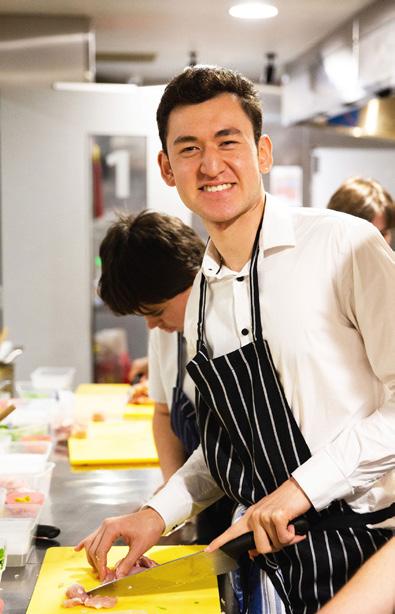
• Disability Employment Service (DES)
• Supported Employment
• Mentoring
At Barkuma, we understand that the transition to life after school can be overwhelming, and we’re here to help you prepare your child for this important step.
(08) 8414 7100
Barkuma@barkuma.com.au

Scan QR for more information

Child anxiety has become a bigger issue for parents these days. However, even before the bushfires and before the pandemic, kids were experiencing more anxiety.
What we know about children’s anxiety is that it is mostly learned. In the past 25 years nothing has changed with children’s brains. If they are experiencing more anxiety, it is mostly a result of environmental factors contributing to the situation. As children grow older their anxiety can get better or worse depending on what’s happening around them. So, intervening early in a child’s anxiety is important.
A common symptom of a child's anxiousness is avoidance – avoidance of normal challenges or emotional reactions which they haven’t yet worked out how to manage, just yet. School avoidance can be one of those activities that children avoid.
No parent wants to see their child getting anxious so it is not uncommon for parents to want to ‘save’ their child from that distress – and let them stay at home if they put up some resistance to going to school. In such situations a parent might give-in to a child’s distress. In the research on anxiety, this is called accommodation. It happens where one or another parent softens the child’s distress by allowing the child to avoid the problem of going to school.
In the short term both people get relief. The child gets to stay home and the parent giving in, removes the drama. The problem gets worse where a pattern gets established. It might start off as one or two days here or there. However, soon enough, it can turn into a pattern. But before you think this is all down to parents; it’s not. School teachers and school systems can also find themselves accommodating student anxiety by allowing the child to avoid otherwise challenging but normal activities like doing a class talk.
Not all school refusal is at the extreme end of the spectrum, where children might be experiencing an anxiety disorder. Thankfully, that small group of children only represents about 7% of the child population.
During the pandemic a lot of parents, understandably, did not want to be too hard-and-fast with their children. And, so they tried to not put too much extra pressure on their children. But there’s a middle road between backing right off and being too harsh. It’s called warm and firm parenting.
It’s important for mums and dads to develop a plan for what they are going to do to resist giving-in to their child’s school refusal.
1. Set reasonably high expectations. Tell your child, “It’s your ‘job’ to go to school and it’s my job to go to work. That’s the deal unless you’re very unwell”.
2. Work out a plan that you and your partner will follow and stick to it. If you don’t have a plan, chances are that you may find yourself inadvertently giving-in to the child’s avoidance. Stick to your plan, even if you feel under some kind of reprisal from your child.
3. Acknowledge to your child that it is going to be hard ‘some’ days. Tell them you ‘get it’ that they are going to feel reluctant, nervous or unsure.
Allowing a child to stay at home, can creep up on parents and it can become an issue if a parent then attempts to change the pattern back to a more normal way of operating. For example, parents who are trying to re-establish a routine of attending school can find that their attempts are met with violence from some older children or that their child calls them mean for wanting them to get back to school.
It can be very hard for a caring, loving parent to not be triggered into thinking they are being mean. As a consequence, some parents can feel compelled to jump-in to relieve their child’s distress. So, a vicious cycle ensues. It’s ‘a damned if you do, damned if you don’t’ moment.
One thing is for certain; a child’s anxiety is unlikely to get better by itself or that the child will simply grow out of it. That’s not what the research is saying. Most anxiety will tend to get worse unless it is attended to as early as possible.
Michael Hawton is a registered Australian psychologist, trained teacher, author and a father of two. With 30 years’ experience working with children and families Michael is one of Australia’s foremost experts in tough conversations, managing child anxiety, managing teen anxiety, managing difficult behaviours in children, adolescents, and adults.

Michael Hawton’s new book, The Anxiety Coach – reducing anxiety and building resilience skills in children and tweens is now available. Available from exislepublishing.com and wherever good books are sold.
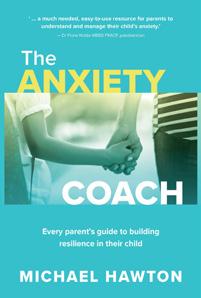
RRP $34.99
4. Don’t get ‘tripped up’ by their distress. Parents can feel mean by making a firm rule. You need to overcome your compulsion to acquiesce. When parents give in because they don’t like seeing their child being upset, this is called a transference reaction.
5. For avoidance behaviour that’s entrenched, stage their return to school. Get a piece of paper and draw up a ladder, with ten rungs on it. At the top at level 10, write ‘goes to school for full days, without protesting’. At the bottom rung of the ladder at level 1, write ‘NOT getting dressed for school but hopping in the car for a drive-by of the school at the beginning of the day’. Fill-in steps 2 to 9, with increasing levels of difficulty for three weeks until you gradually get to level 10.
A child's anxiety is unlikely to get better by itself. Most anxiety will tend to get worse unless it is attended to as early as possible.
Allowing a child to stay at home, can creep up on parents and it can become an issue if a parent then attempts to change the pattern back to a more normal way of operating.
3. Now is the time to parent as a wise guide, a coach, or a shrewd manager. It’s time to let go of being too critical, too snappy, too sharp, or too controlling as these techniques will inflame situations. Oh? A word of caution. As you take on the new roles of wise-guide or coach, do not appear too wise or too keen! Yes, there is an art to this. Just be there for them.
Mark is a teacher, counsellor, public speaker, and the author of 16 publications. He works in private practice in Adelaide as a mentor to children and adolescents, and as a coach to parents. Mark is the recipient of SA Senior Australian of the Year (2022).

The years between 10 to 20 years are loosely considered, adolescence. It is an incredible time for human development because massive changes inside and outside the body occur. There are changes to the voice, the average girl will grow 24 centimetres in height and, the average boy 26 centimetres, there are significant brain changes which herald intense social and emotional adjustments. Also, during adolescence, there’s the establishment of an identity, and the formal commencement of logical and rationally reasoned thought. And then, there’s a sexual awakening, and along with this, comes the ability for your child to make you a grandparent.
Many myths abound about adolescence. The best one is that your child will run wildly off the rails, show appalling behaviour and there will be nothing but conflict. My view is that this age group may be challenging sometimes, but on balance are deeply rewarding, almost soulful, to parent and to be with.
Adolescence is a time of genuine vulnerability because with so many new brain cells looking to strengthen, connect and wire up, things get
hectic in the brain. This, in combination with huge hormonal fluctuations, can leave your teen struggling with more difficulty regulating their emotions than previously. This is when many parents say, “Mark, it looks like my child has gone backwards!” They have not gone backwards at all; this is driven by a brain under a magnificent construction. And during this time, our teens need us connected and on their side.
So, what is a parent to do? Here are a few ideas to create your resilient teen. But remember, everything that happens, happens within their ‘rite of passage’ to adulthood and you are entwined in this. And this ‘rite of passage’ has it all; hiccups, mistakes, thunderous disagreements, as well as huge love and the most beautiful moments that will touch you forever.
1. Firstly, your relationship with them counts for everything. Adolescents need at least one parent they can connect with, can chat to, will share with, and will be a positive influence in their life.
2. Your teen also needs a solid support network. Networks range from being connected to extended family members, or to caring individuals from sporting clubs, interest groups or community-based groups. And while on support networks, be sure you set up your own! It is sustaining to surround yourself with a few grounded and resourceful friends who are doing the same journey as you.
4. What about delivering a necessary consequence to your teen? First up, teach yourself to remain poised in those hot and heavy moments. Touch, hold or hug them. Say you love them. Whatever works. Then you might comment, “I’m sorry that didn’t work out for you” or “Are you okay?” or “I know you’re disappointed. Can I help?” The best consequences are where you support them to repair the damage they may have caused to you, to someone, or to someone’s property. And it’s fine to express your disappointment in the poor decision they made. Just don’t go on and on. If you must deliver a negative consequence, do it with kindness, make it appropriate, and never overblown.
Remember, they will rebel against the sensible limitations you place on them sometimes because they are searching for independence. As you try to parent, they’ll tell you none of their friend’s parents’ parent them any longer! Yes, this is wonderfully normal. Yet, they need your empathy and boundaries for security, comfort, and reassurance – a sense of belonging is everything. Family should be the place they draw strength from, get support, and where they feel accepted and loved.
The teen years are peppered by higher levels of emotional and physiological vulnerability. Consequently, find ingenious ways to connect and build credit because a quality relationship is the greatest protective factor you can supply your beloved adolescent with! So, keep on parenting them well into young adulthood. This is truly an amazing metamorphosis in a young human being’s life.
marklemessurier.com.au
whatsthebuzz.net.au
Mark Le Messurier has just released his highly anticipated book, 'Guiding Kids Through the Tough Moments,' designed specifically for parents, educators, and caregivers.

With genuine empathy and utmost respect for the influential figures in children and teens’ lives, Le Messurier has crafted a conversational-style book that aims to engage readers on a deep and authentic level. Recognising that navigating challenging moments alongside kids can be a daunting experience, he opens up the possibilities for change while acknowledging the complexities of these tough situations.
The book delves into the tough questions that parents and educators often face. What happens when a child refuses to listen, challenges authority, behaves rudely, or worse? Le Messurier urges readers to reflect on their intrinsic responses during these intense moments. Do we resort to anger, threats, or emotional withdrawal?
‘Guiding Kids Through the Tough Moments’ ventures into this difficult space, offering practical techniques to hold children and teens accountable using a countercultural mindset.
routledge.com/guiding-kids-through-thetough-moments
With the internet now firmly part of daily life, social media has never been more intertwined with our real lives. This rings truest for the current generation of children and adolescents more than anyone else. Growing up surrounded by technology, they know the digital world just as well as they know the real world. And while this allows them to build friendships and find communities across the globe, social media can also be toxic to their wellbeing.
New research from Dove’s Self Esteem Project has found more than half of young girls in Australia aged between 10-17 are on social media every day. 70% of those surveyed also follow or watch influencers on social media, with a focus on beauty, fashion and celebrities as popular interest topics.
Beauty advice fills their feed, and some of this can be especially toxic. Shockingly, the study also revealed that 52% of young girls constantly check how they look in photos and wish they looked better, while 48% said they often wish they looked like someone else. Furthermore, 54% said toxic and potentially harmful beauty advice from social media influencers, such as filing down teeth for the perfect smile or using waist trainers to slim down, has caused low self esteem.
What is toxic beauty advice and how do we spot it?
Toxic beauty advice normalises unrealistic beauty standards and promotes potentially harmful beauty practices. Self worth is also typically linked to physical ‘perfection’ - something that is infinitely unattainable. This can include things like:
Also known as #Thinspo, #Thinspiration often Also known as #Thinspo, #Thinspiration often shows images of extremely thin bodies, quotes discouraging eating, and advice on maintaining and concealing disordered eating behaviours. While many social media platforms have attempted to restrict access to this type of advice by removing the hashtag #Thinspo from their search functions and banning toxic accounts, young people can still find ways around these restrictions by changing hashtags and usernames.
#Fitspiration, also known as #Fitspo, implies that an ‘ideal’ body can be achieved by following an account’s diet and exercise advice, or purchasing products and services they’re advertising. #Fitspo posts promote narrow definitions of beauty and position exercise as a way to achieve these ideals. As of 2023, over 72 million Instagram posts were tagged with #Fitspo.
Social media is often filled with ‘beautiful’ people living their ‘perfect’ lives and research tells us that we frequently compare ourselves to this type of content. Unsurprisingly, these comparisons cause girls to feel worse about themselves in a range of areas, from their appearance to their social life.
According to Dove, 60% of young girls in Australia wished they had information about how to avoid or deal with idealised beauty content. It’s obvious many young girls are eager to detox their feeds.
As for the parents? 86% of surveyed mothers in Australia also think social media can negatively impact girls’ body confidence, but only 27% of Australian mothers talk to their daughters about it.
It’s unrealistic to try and remove or filter out toxic beauty advice from social media completely, so education is key. Both kids and parents alike need the tools to spot toxic trends and advice on social
media and have conversations around what is and is not good for their wellbeing. So, how can we start the conversation?So, how can we start the conversation?
Preparation
Spend time on popular social media platforms like TikTok, Instagram, YouTube, Facebook, Snapchat and Twitch.
Get familiar with these platforms, check out the safety functions that enable users to block, report and unfollow accounts. Follow the accounts your child engages with most and discuss what types of posts and videos they like and why.
The goal is to start conversations that will help kids identify toxic beauty advice and think more critically about their feed and consider ways they can detoxify it.
Remember: It’s about regularly checking in and making social media a safe and positive space together – not controlling your child’s accounts.
Some talking points can include:
Comparing yourself to others on social media can be problematic as posts can be filtered or edited and far from real life.
When your child is scrolling through their feed, discuss if some of their favourite accounts are a fair comparison to their own life. Highlight the
widespread use of digital distortion and filters – not to mention the fact that some accounts hire professionals to create and edit their posts.
Ask them to consider if these accounts have the qualifications to be trusted sources on topics like nutrition, exercise and beauty standards.
Encourage them to remember that what they see in their feed is somebody’s carefully curated highlight reel – it’s rarely real life.
Now it’s time to walk the walk! Spend 10-minutes scrolling through your feeds together, thinking about how certain posts make you feel. Discuss what accounts make you feel uplifted and inspired and which ones negatively impact your self-esteem or body confidence. Next, show your child how to block or report toxic beauty advice (if they don’t know already).
Make a pact to detoxify your feeds together by unfollowing or hiding the posts that make you both feel self-doubt. If they feel good not seeing these posts for a week, encourage them to unfollow those accounts for good.
Once the negativity is removed from your feed, make sure to follow positive role models that educate, inspire, spark joy and creativity, and make you feel empowered and uplifted!
Repeat this process as many times as you need, as frequently as you need. Don’t be harsh on yourself if you need to continue working on your relationship with your own body and appearance.
And remember, the most important thing is to have open conversations, not just with your children, but with other parents, friends and your wider community to spread awareness of the impact of toxic beauty advice and encourage the next generation to build their confidence.
Hannah Jarman is the Executive Dean Research Fellow within the School of Psychology at Deakin University, specialising in adolescent development, body image and social media.
For more information: dove.com/au/dove-self-esteem-project.html

More than half of young girls in Australia aged between 10-17 are on social media every day. 70% of those surveyed also follow or watch influencers on social media, with a focus on beauty, fashion and celebrities as popular interest topics.

You might feel exasperated on the hunt for the proper educational support for your child. Many institutions will overpromise and underdeliver, especially when creating custom learning plans. Getting your child to stay interested and commit to their new workload is even more challenging. That's where private tutors come in. The best way to get your child to focus for an entire hour, not to mention enjoy their tasks, is through a one-onone relationship. One-on-one tutoring gives your child the individual attention they need to excel academically and build their confidence. After about three sessions, your child will have built rapport with their tutor and will be keen for their next lesson.
Another essential factor to consider is your child's learning style. Some children are visual learners, while others are auditory or kinesthetic learners. Individual tutors are invested in your child's success, so it is in their best interest to adapt their teaching style to meet your child's unique learning needs.

I have been an English tutor for ages Reception to Year 12, for over seven years. I have seen students go from failing basic literacy levels to scholarship contenders and high-achieving students struggling to balance multiple subjects to winning merits. Almost every time, the student is not struggling with the actual content but rather some form of self-doubt, overwhelm, or confidence issues. When these are the core issues, piling on more content can exacerbate the issue rather than solve it. It can also be a case of learning gaps, which can only be identified through observation, not testing. Tutoring is a lot like personal training. Some people might not see results after one session, but you will see definite results after ten.
Here are three top tips to help you in the process of finding the perfect tutor:
Identify your child's needs and goals


Before beginning your search for a tutor, it's crucial to have a clear understanding of your child's specific needs and goals. Assess their strengths and weaknesses in the subject or subjects they require assistance with. Determine whether your child requires help with understanding concepts, improving study skills, or preparing for exams. By identifying their specific needs, you can effectively communicate these requirements to potential tutors and find someone who can address them effectively.
Seek recommendations and reviews

Reach out to other parents, teachers, or school administrators for recommendations on reputable tutors in your area. Personal recommendations can provide valuable insights into the quality of a tutor's teaching methods, communication skills, and ability to engage with students.
Conduct interviews and assess compatibility
Once you have shortlisted potential tutors, schedule interviews or introductory sessions to assess their compatibility with your child. During these interactions, observe how the tutor interacts with your child and gauges their learning style. Effective communication and a positive rapport are essential for a productive tutoring relationship. Discuss the tutor's teaching methods, experience, and qualifications to ensure they align with your child's needs.
When students can work in their comfortable space, often wherever they complete their homework, their engagement and success rate is much higher. They can focus on their tasks without distraction and are much less nervous, so online tutoring is more ideal than previously thought (not to mention the interactive tools).
If you’re looking for help connecting with the right tutor, contact Ella at Tutorpillar
hello@tutorpillar.co | 0458 971 484


Patch Theatre’s Spark removes barriers to arts access by bringing arts experiences directly to the classroom.
Available for booking on demand, Spark is a series of fun and interactive arts experiences, designed by Patch, in collaboration with artists, to provide innovative creative learning opportunities in schools. Three in-classroom Spark experiences are available to kindergarten to year three students in terms three and four – Once Upon a Jar, Bloom, and Light Painting. In Once Upon a Jar, a visitor shares mysterious stories and engages with students to create their own imaginative adventures, in Bloom students explore the wonders of nature through light and meditation, and in Light Painting students are immersed in storytelling, complete with live-drawn glowing UV artworks.
Bringing Patch’s signature interactive style to the classroom inspires and engages students, igniting students’ imaginations and creative thinking. Each experience has been devised in consultation with school classes to connect with curriculum capabilities tailored to the age group. In addition to being a fantastic learning opportunity for
students, Spark provides teachers with the tools to integrate creative play into their classroom teaching through accompanying education resources.


Over 2,000 students across South Australia have enjoyed Spark, including many from regional areas. Spark: Once Upon a Jar performer Stephen Sheehan said, “You can see how schools are benefiting from this program and how important it is to bring theatre to remote locations. It's been a highlight of my professional career to be involved in the work.”
The program has received an outstanding response, with many students and teachers expressing how it’s impacted them. One year three student said, “I enjoyed it VERY MUCH”, while a teacher shared that their students were “enthralled watching and participating” and the teaching staff loved it as much as the students.
Spark experiences are highly engaging and provide a unique opportunity for students to experience the magic of the arts within the convenience of their classroom.
To bring Patch Theatre’s Spark to your school visit: patchtheatre.org.au
Delivering Spark in schools across regional SA is made possible thanks to funding from the Department for Education and the generous support of FWH Foundation, Lang Foundation, and an anonymous foundation.
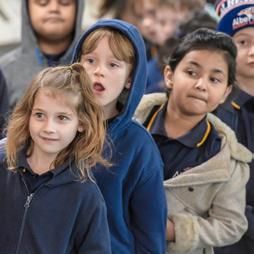
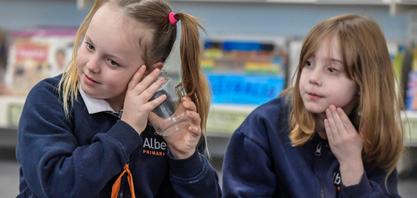
Our highly qualified Preschool Teachers support children to develop the language, literacy, early maths and social and emotional skills they need to start school ready to learn!
Plus, our families benefit from the convenience of a fiveday-a-week Preschool program delivered across the whole day. Taking the pressure off drop-offs and pick-ups, and the need for any additional ‘child care’.

With more than 50 centres across South Australia, there’s a centre near you!

First Nations people have been taking care of our beautiful lands since time immemorial. Teaching children about First Nations perspectives is a great way to grow their appreciation of cultural diversity, deepen their connections to Country, and inspire them to take action for the safe future of our planet. “The knowledge that comes from our Elders and ancestors that have come before us, is extremely important to capture and keep alive. Our lands will be much healthier in doing so,” shares
Adam Shipp, Proud First Nations educator and Wiradjuri man, who works with Junior Landcare to showcase Indigenous perspectives across the Junior Landcare Learning Centre.
Here are three ideas from Adam to help embed First Nations perspectives in everyday learning experiences and activities.
2: Get to know your native fauna and flora
Different areas have different flora and fauna, and getting to know the ones unique to your area is a great way to connect with your local environment. Research what plants are native to your area and see if you can find out a First Nations use for them. For example, Eucalyptus and Melaluca trees are often planted on road verges in the suburbs and are extremely important to First Nations people.
For ideas on how to create your own Indigenous plant use garden, visit juniorlandcare.org.au

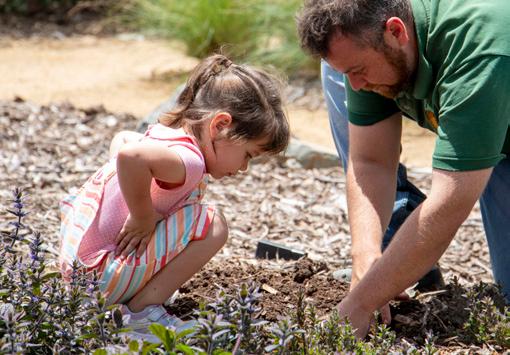
As a proud first nations Wiradjuri man, I am extremely proud to see these online resources developed which capture our cultural values and stories for the next generations.
Our Early Learning Centre is the first step in a Christ-centred education pathway.
Immersed in our Brooklyn Park Campus, your child will have:
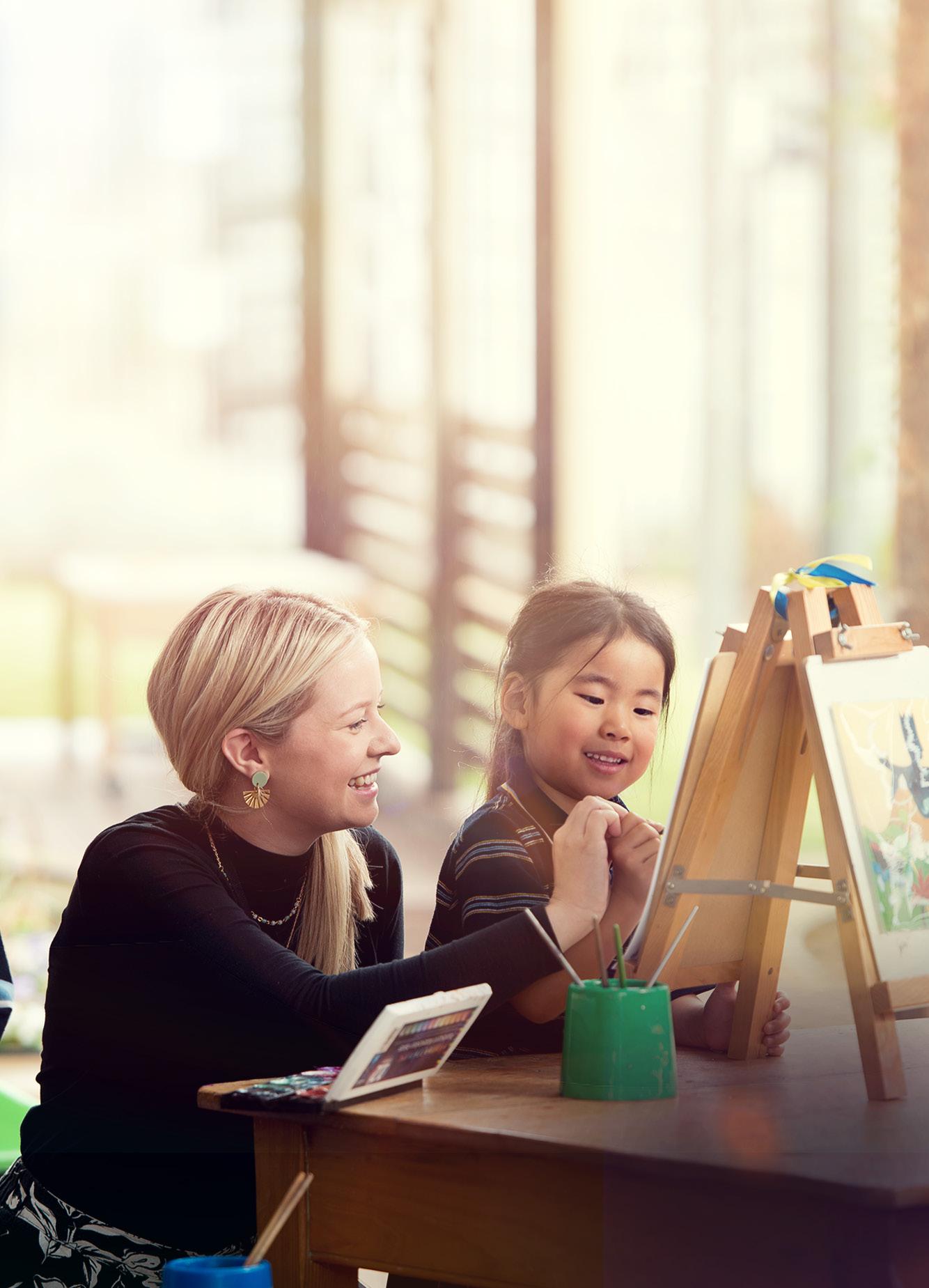
• Learning from a Christian worldview
• Highly qualifed Christian educators
• Excellent facilities including a new third room and sheltered outdoor play spaces

Join a Principal’s Tour
Tuesday 15 August
Come to the ELC Open Day
Saturday 9 September
To register and find out more, visit our website.
emmauscc.sa.edu.au
Take some time to just sit and observe your environment. What can you see? What can you hear? What does it feel like to be outside; for example, are you feeling a little warmer? First Nations peoples across Australia have a detailed understanding of their environment, passing it down from generation to generation. They observe their environment closely, and use this knowledge to understand the changes in plants, animals and climate.
Did you know: First Nations’ people have more than four seasons, and even have different seasons all over the country?
Try Junior Landcare’s Local Seasons Journal to discover more about Indigenous weather knowledge and to record your own observations!

3: Find out whose Country you’re on!
Connect with local mobs or Elders in your area. Even if it’s just to listen to a local story, this will help you understand your Country better. A great place to start, if you don’t know already, is to find out whose Country you’re on. You can view the AIATSIS map of Indigenous Australia and look more closely using a magnifier to find language, tribal or nation groups of First Nations peoples.
The Junior Landcare Learning Centre, supported by Woolworths, provides a range of First Nations perspectives resources.
To find out more: juniorlandcare.org.au/first-nationsperspectives-resources
Adam Shipp Adam Shipp, First Nations educator and proud Wiradjuri man
Every day, without fail, most parents hear those two little words: "I'm hungry." The challenge of providing creative but healthy after-school snacks is never-ending. That's why we reached out to Jan Macfarlane, a leading Clinical Nutritionist in Australia, to get some expert advice.
Q: What’s one of the most important factors a mum should look for when picking an afternoon snack?
Looking at snacks that are “blood sugar balancing” all throughout the day will help your little one with energy balance, concentration, and (mood) - be gone, the afternoon grumpy slump. Having fibre, good essential fats and protein all help with blood sugar balancing.
Fruits, veg, nuts and seeds contain a great mix of these, along with many added essential minerals, antioxidants, and prebiotic fibre for microbiome health.
Ingredients
Base
2 apples, or pears cored and sliced
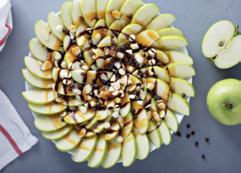
Topping
2 tbsp almond butter (or 100% natural nut butter or choice)
1 tbsp maple syrup or honey
Additional topping ideas
Toasted coconut flakes
Pepitas or seeds of choice
Mixed nuts crushed
Cacao nibs
Dark chocolate shaved
Choc chips
Raisins

Ingredients
½ cup of oats
1 tsp baking powder
¼ tsp vanilla extract
1 tsp cacao powder
2 tbsp honey, maple syrup
2 free range eggs, lightly beaten
3 tbsp almond (or milk of your choice).
1 tbsp virgin coconut oil
Pinch of himalayan salt
Top with berries, or fruit of choice, cacao nibs or choc chips
In a blender, combine ingredients until well incorporated and evenly mixed through. Add more milk if thinner pancakes are preferred. Grease a large frying pan with oil and pour 2 tablespoons of batter for each pancake into the pan (you may only be able to cook two or three pancakes at a time). Cook over medium heat for 2 minutes, or until the tops dry out slightly and the bottoms start to brown. Flip and cook for another minute, then transfer the pancakes to a plate, Repeat. Serve spread with honey or maple syrup, berries or fruit of choice.
WE ASPIRE TO INSTIL CONFIDENCE, DEVELOP SELF-ESTEEM, AND BUILD LIFE-LONG FRIENDSHIPS FOR OUR PARTICIPANTS, WHETHER THEY WISH TO PURSUE A CAREER IN ENTERTAINMENT, OR JUST HAVE FUN AND GET FIT.

TERM 3 ENROLEMENT NOW OPEN


As parents, we want to do what's best for our children, and that includes giving them healthy and nutritious lunches. But with so many processed foods on the market, it can be tough to know which ones to choose.
Many of us check the sugar and sodium content in our food but do you read the ingredient list?
When ingredient lists are long and include a range of numbers or long words you don’t understand, the product probably contains additives and preservatives.
SWAP THIS:
Jumpy's Chicken Chips 5 Pack
Ingredients: DEHYDRATED POTATO, VEGETABLE OIL, CORN STARCH, SALT, WHEY POWDER, GLUCOSE, FLAVOUR ENHANCES (621, 635), SUGAR, ONION POWDER, FLAVOURS, SOY SAUCE POWDER, SPICES, FOOD ACID (330), HERBS, PRESERVATIVE (223)
SWAP THIS:
Uncle Tobys Roll Ups Berry

Sour Flavour 6 Pack

Ingredients MALTODEXTRIN (CORN), CONCENTRATED FRUIT PUREE (23%) APPLE, RASPBERRY (1%), STRAWBERRY, BLUEBERRY, BLACKCURRANT, SUGAR, SOLUBLE CORN FIBRE, FOOD ACID (MALIC, CITRIC, ASCORBIC), MODIFIED STARCH (1442), SUNFLOWER OIL ( SOY ), APPLE JUICE CONCENTRATE (2%), PLANT ORIGIN EMULSIFIER (471), NATURAL FLAVOUR, COLOUR (ANTHOCYANIN), VEGETABLE GUMS (410, 415). CONTAINS SOY
SWAP THIS:
Sakata Rice Crackers

Seaweed 90g
Ingredients: RICE (88%), SOY SAUCE (SOY, RICE, SALT), SUGAR, YEAST EXTRACT, DRIED SEAWEED (0.5%), CARAMELISED SUGAR SYRUP, SALT, NATURAL FLAVOURS, RICE BRAN OIL, MINERAL SALT (POTASSIUM CHLORIDE), FOOD ACID (CITRIC ACID).
Some additives serve a purpose, but many others are artificial colours and flavour enhancers which are added to make the food more attractive to our taste buds. Unfortunately, not all of them are conducive to learning.
One way to reduce the number of additives in your child's lunchbox is to make simple swaps. Here are a few of our favourite lunch box swaps.
SWAP THIS:
Uncle Tobys Le Snak Tasty

Cheese Dip & Crackers 6 Pack
Ingredients: CHEESE SPREAD CHEDDAR CHEESE (47%) (MILK , SALT, STARTER CULTURE), WATER, MARGARINE (VEGETABLE OILS, WATER, SALT, MILK SOLIDS, EMULSIFIERS SOY LECITHIN, 471, ANTIOXIDANTS 304, 307B), WHEY POWDER ( MILK ), FLAVOUR ( MILK ), MILK MINERAL, MINERAL SALTS (339, 452), PRESERVATIVE (234). CRACKER WHEAT FLOUR, VEGETABLE FATS AND OILS (ANTIOXIDANTS 307, 307B), WHOLEMEAL WHEAT FLOUR, SUGAR, WHEAT BRAN, INVERT SYRUP, SALT, RAISING AGENTS (503, 500), POPPY SEEDS, WHEAT GERM. CONTAINS: GLUTEN (WHEAT), MILK AND SOY. MAY CONTAIN EGG, TREE NUTS AND PEANUTS.
SWAP THIS:
TO THIS:
Kettle Multipack Sea Salt 5 Pack

Ingredients: POTATOES, SUNFLOWER OIL, SEA SALT.
TO THIS:
True Fruit Strapple Apple & Strawberry Fruit Strips 120g

Ingredients: 100% DRIED FRUIT PASTE (APPLE, STRAWBERRY).
Dairylea Cheestik Sticks 240g
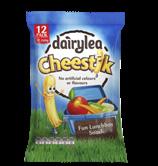
Ingredients: CHEESE (MINIMUM 45%) (MILK, SALT, STARTER CULTURE, ENZYMES), WATER, BUTTER OR CREAM (FROM MILK) OR MILK FAT, MILK SOLIDS, MINERAL SALTS (331, 339, 452), FLAVOUR (CONTAINS MILK), SALT, PRESERVATIVE (200), FOOD ACID (270).
SWAP THIS:
Arnott's Shapes Original BBQ Cracker Biscuits | 175g

Ingredients: WHEAT FLOUR, VEGETABLE OIL, STARCH (WHEAT), SALT, TOMATO POWDER, YEAST, GARLIC, PARSLEY, SUGAR, WORCESTERSHIRE SAUCE, ONION POWDER, BAKING POWDER, NATURAL FLAVOUR, VEGETABLE PROTEIN EXTRACT (FROM MAIZE), SPICES, ANTIOXIDANTS (E300, E307B FROM SOY, E304), FLAVOUR ENHANCER (E635), EMULSIFIER (SOY LECITHIN), MALT EXTRACT (FROM BARLEY).
TO THIS:
Eatrite Rice Crackers Tamari

Seaweed 100g
INGREDIENTS: BROWN RICE, SOY SAUCE, (WATER, SOY BEANS, SALT), SEAWEED.
TO THIS:
Dairyworks Colby Cheese & Rice Crackers 4x120g

Ingredients: COLBY CHEESE 83% (PASTEURISED MILK, SALT, CULTURES, ENZYME [NON-ANIMAL RENNET)], RICE CRACKER 17% (RICE [97%]' VEGETABLE OIL, SALT).
TO THIS:
Bega Stringers Original Cheese 8 pack | 160g

Ingredients: MILK, SALT, ENZYME (NON-ANIMAL RENNET), CULTURE.
TO THIS:
Happy Snack Company Kids Fav-va Beans Pizza | 150g

Ingredients: BROAD BEANS (FAVA) (78%), NON GMO CANOLA OIL, TOMATO POWDER, GARLIC POWDER, SUGAR, ONION POWDER, SEA SALT, RICE FLOUR, ACID (CITRIC), PAPRIKA, BASIL FLAKES, PARSLEY FLAKES.
By making simple swaps, you can help reduce the number of additives in your child's lunchbox. And you can still give your child a healthy and nutritious lunch that they'll love.
Get the Supermarket Swap app at the App Store.

supermarketswap.com.au
@supermarket.swap





